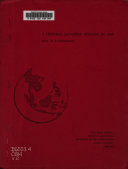
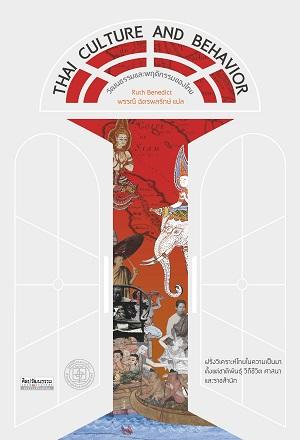
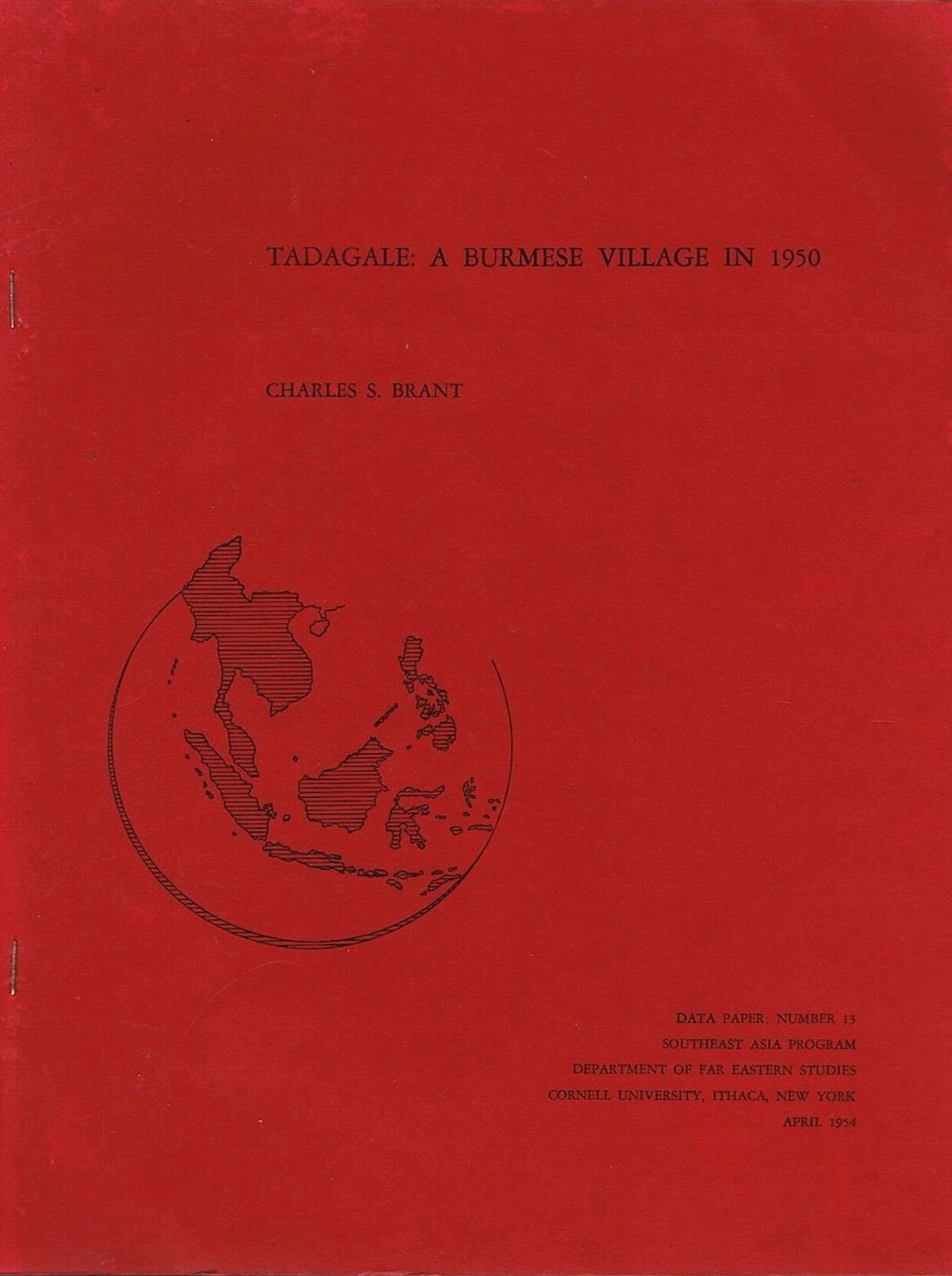
Books in series
Report On The Chinese In Southeast Asia, December 1950
1951

A Central Javanese Village In 1950
1951
An Account Of An Acquisition Trip In The Countries Of Southeast Asia
1952

วัฒนธรรมและพฤติกรรมของไทย
1952
Teaching and research relating to Southeast Asia in American colleges and universities, April 1952
1952
Labour And Tin Mining In Malaya
1953
Survey of Chinese language materials on Southeast Asia in the Hoover Institute and Library
1953
Verb Constructions In Vietnamese
1953
Account of a Trip to the Countries of Southeast Asia for the Library of Congress, 1952-1953
1953

Tadagale
A Burmese Village In 1950
1954
Selected Economic Development Projects In Burma And Indonesia
Notes And Comments
1954
Some Observations Concerning The Role of Islam In National And International Affairs
1954
Malaya
A Study Of Governmental Response To The Korean Boom
1955
Aspects of Health, Sanitation and Nutritional Status in a Siamese Rice Village
Studies in Bang Chan 1952-1954
1956
REVISED UNITED STATES-PHILIPPINES TRADE AGREEMENT OF 1955
1956
Courses Related To Southeast Asia In American Colleges And Universities, 1955-1956
1957
The Role And Importance Of Philippine Interisland Shipping And Trade
1957
On the Wayang Kulit (purwa) and Its Symbolic and Mystical Elements
1933
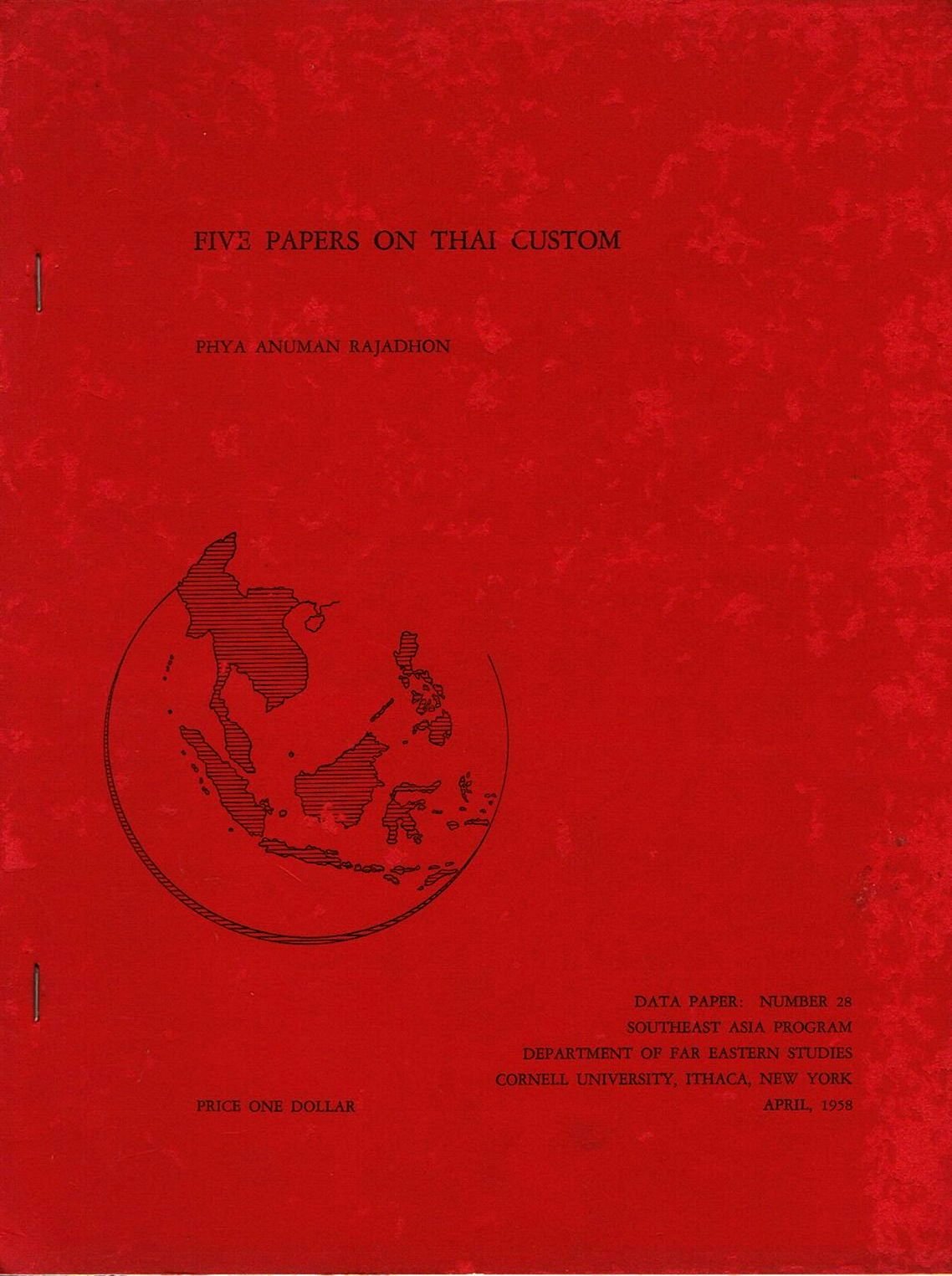
Five Papers On Thai Custom
1958
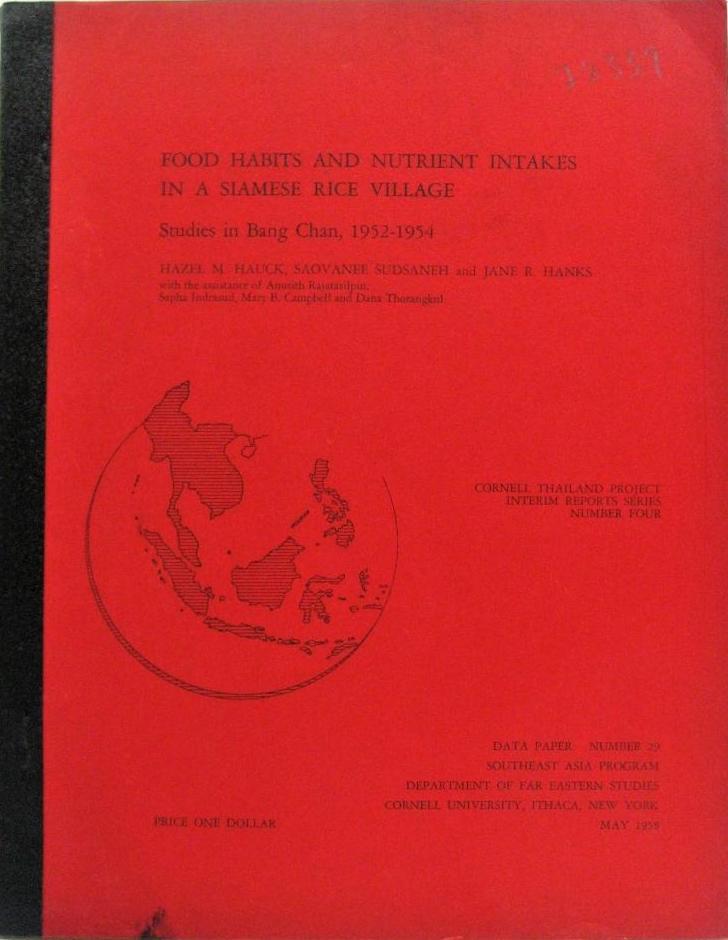
Food Habits and Nutrient Intakes In A Siamese Rice Village
Studies in Bang Chan, 1952-1954
1958
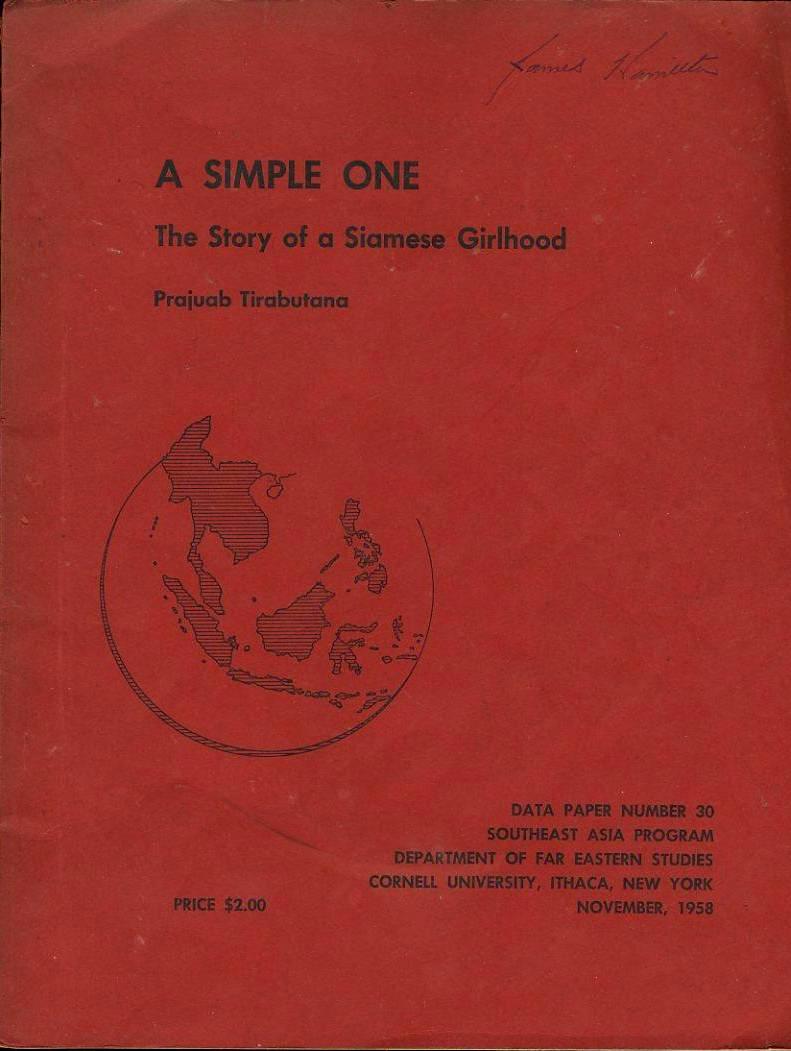
A Simple One
The Story of a Siamese Girlhood
1958
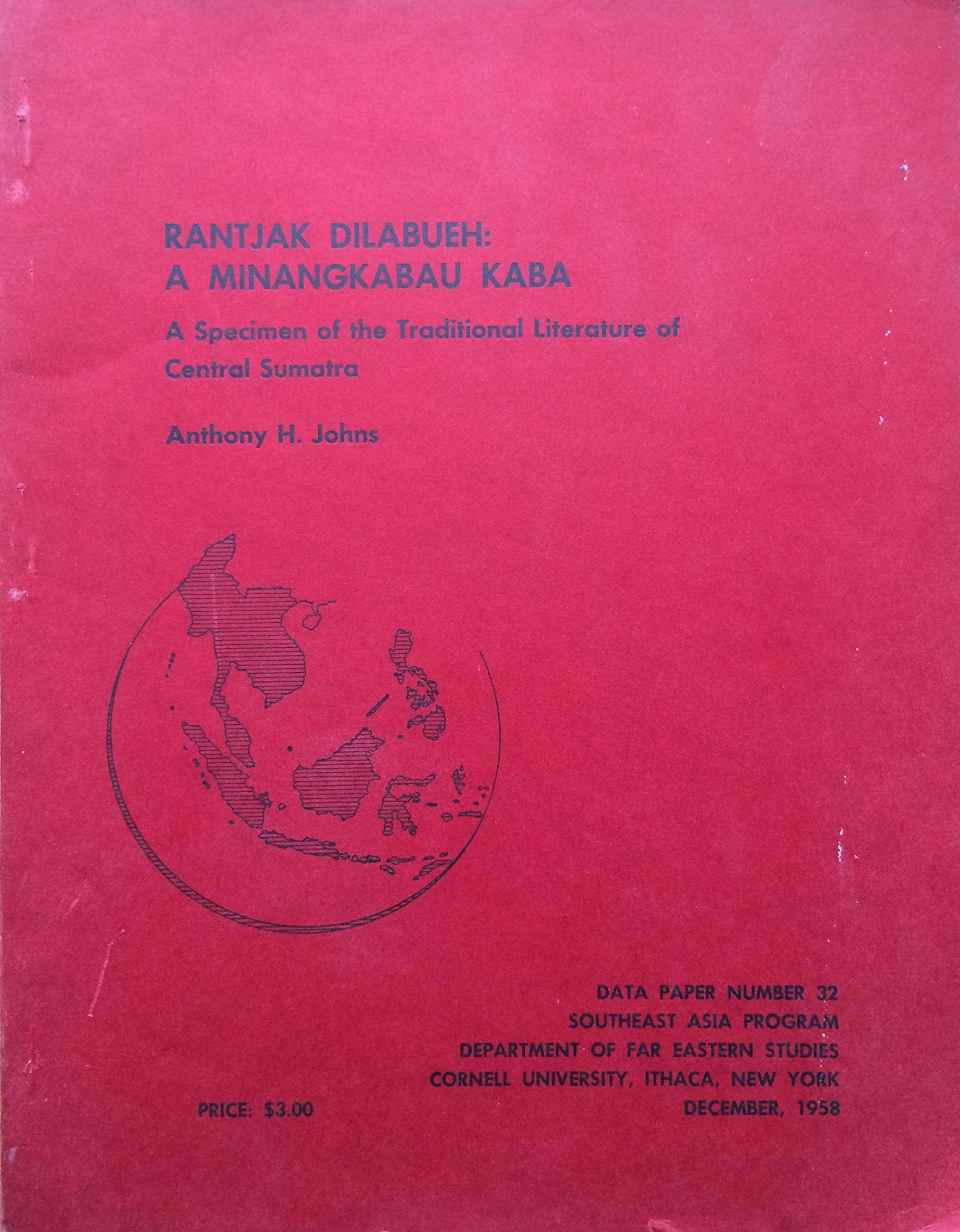
Rantjak Dilabueh
A Minangkabau Kaba; A Specimen of the Traditional Literature of Central Sumatra
1958
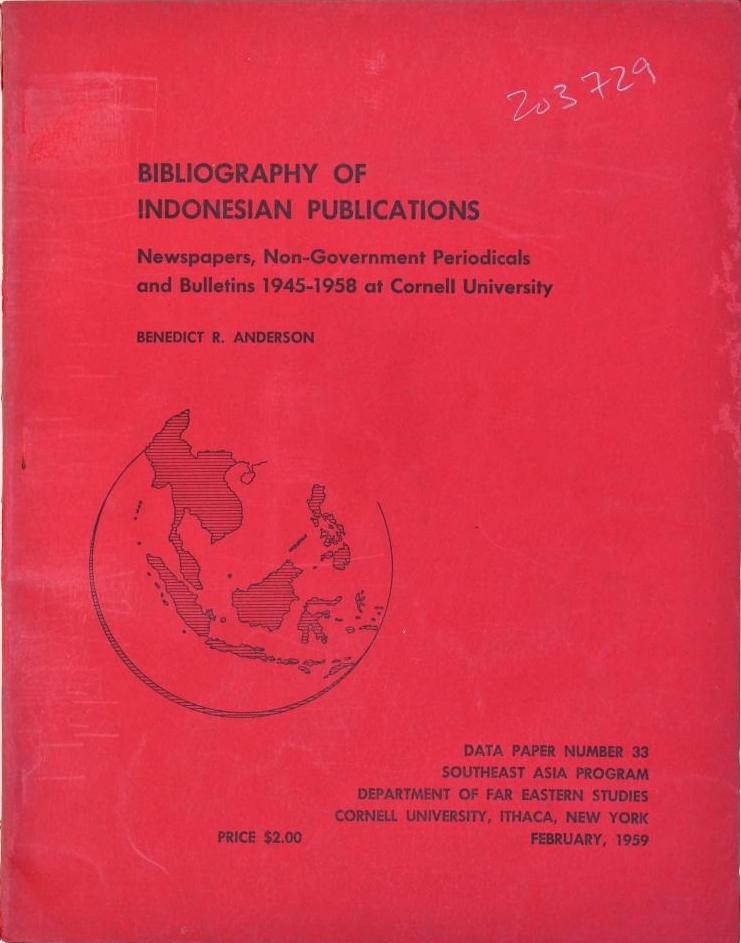
Bibliography Of Indonesian Publications
Newspapers, Non-Government Periodicals and Bulletins 1945-1958 at Cornell University
1959
Bibliography Of Soviet Publications On Southeast Asia
As Listed in the Library of Congress Monthly Index of Russian Acquisitions
1959
American Doctoral Dissertations on Asia, 1933-1958
1959
Two Papers On Philippine Foreign Policy
The Philippines And The Southeast Asia Treaty Organization, The Record Of The Philippines In The United Nations
1960
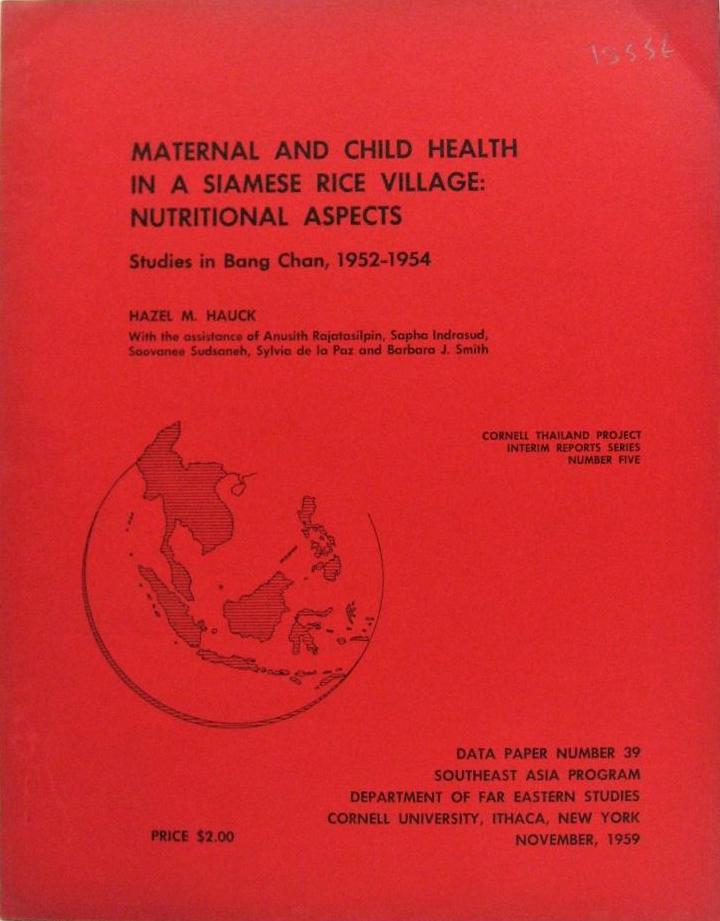
Maternal And Child Health In A Siamese Rice Village
Nutritional Aspects; Studies in Bang Chan, 1952-1954
1959
Southeast Asia Publication Sources
an account of a field trip, 1958-1959
1960
U Hla Pe's Narrative Of The Japanese Occupation Of Burma
Recorded by U Khin
1961
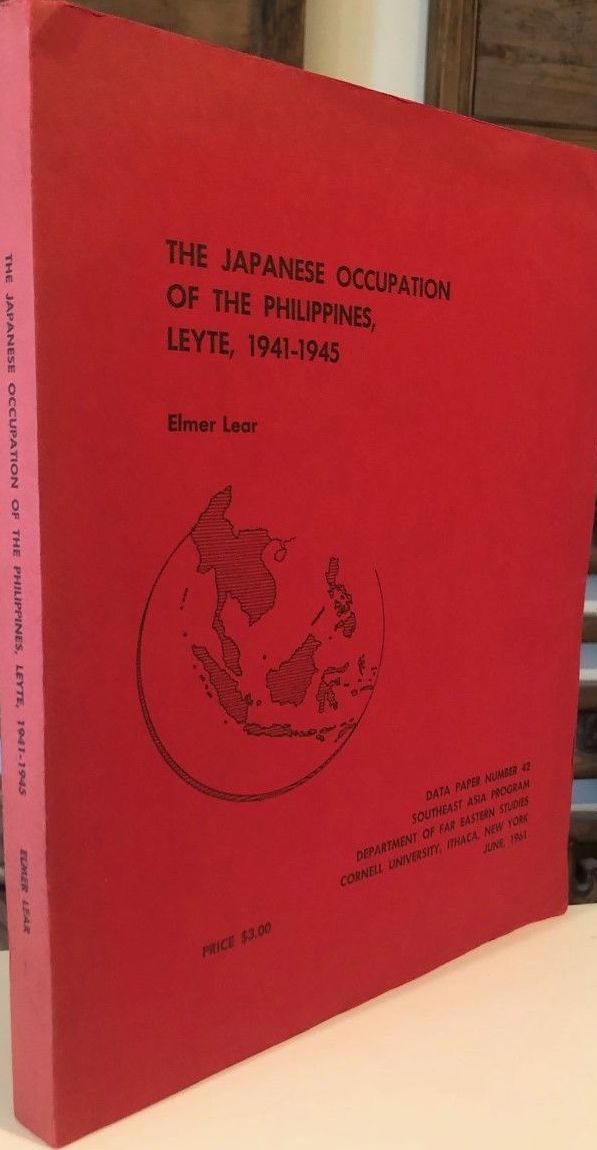
The Japanese Occupation Of The Philippines, Leyte, 1941–1945
1961
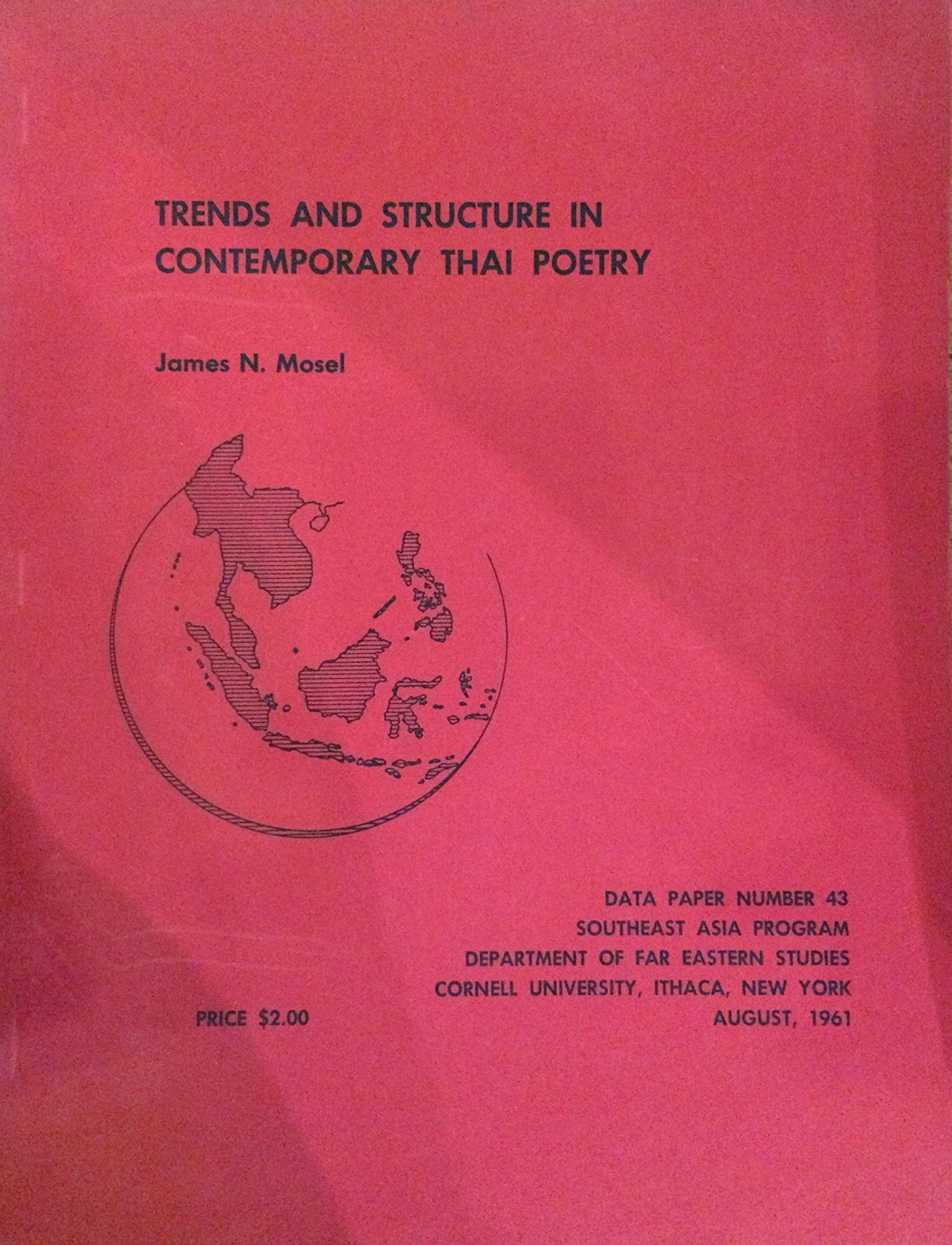
Trends And Structure In Contemporary Thai Poetry
1961
The Man Shu
1961
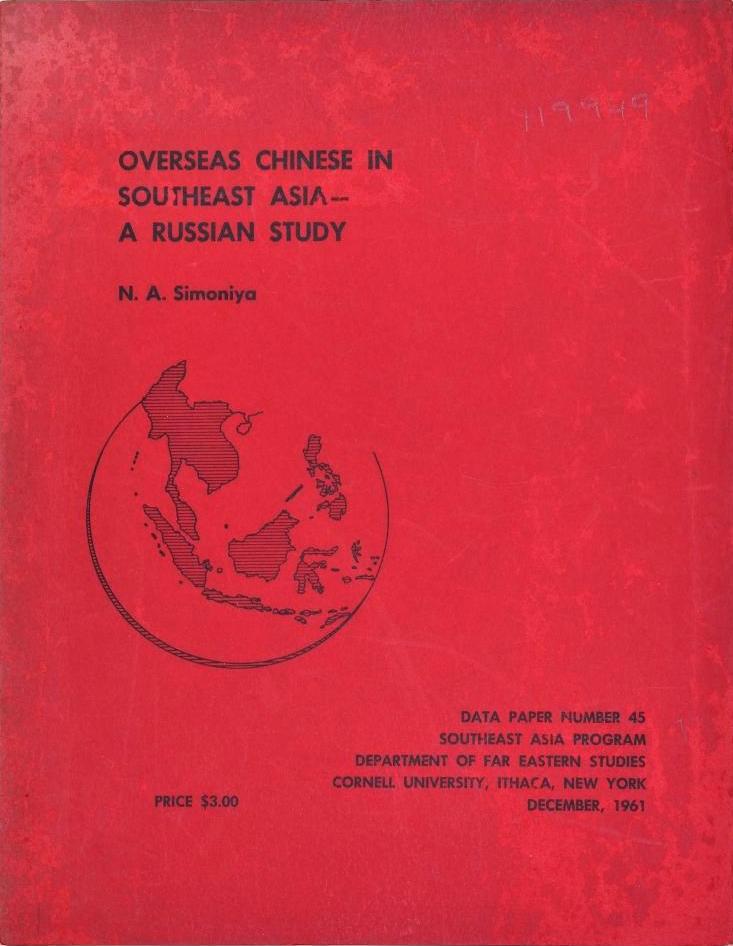
Overseas Chinese in Southeast Asia- A Russian Study
1961
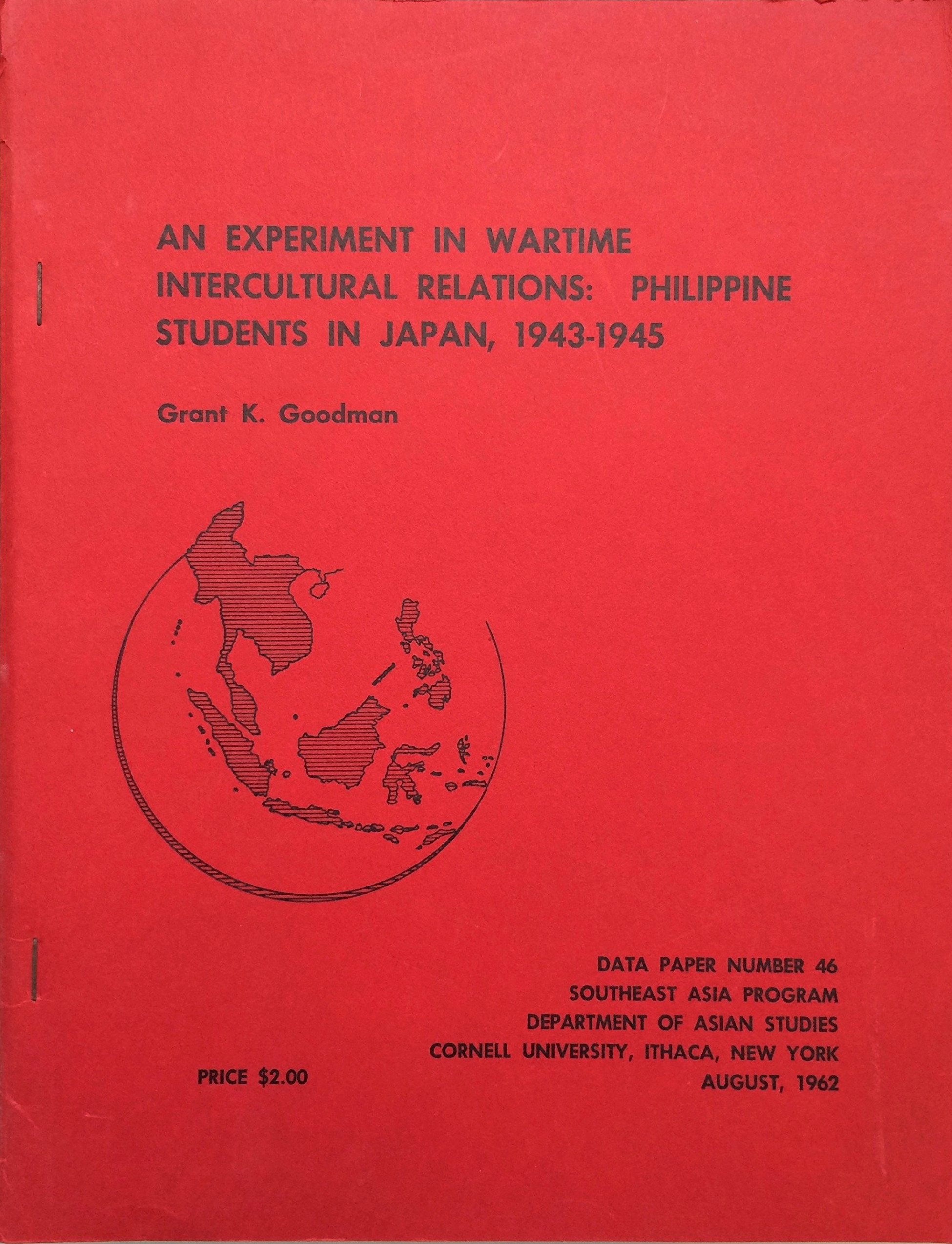
An Experiment In Wartime Intercultural Relations
Philippine Students In Japan, 1943-1945
1962
A Bibliography of North Vietnamese Publications in the Cornell University Library
1962
The Pace And Pattern Of Philippine Economic Growth
1938, 1948 And 1956
1962
Maternity And Its Rituals In Bang Chan
1963
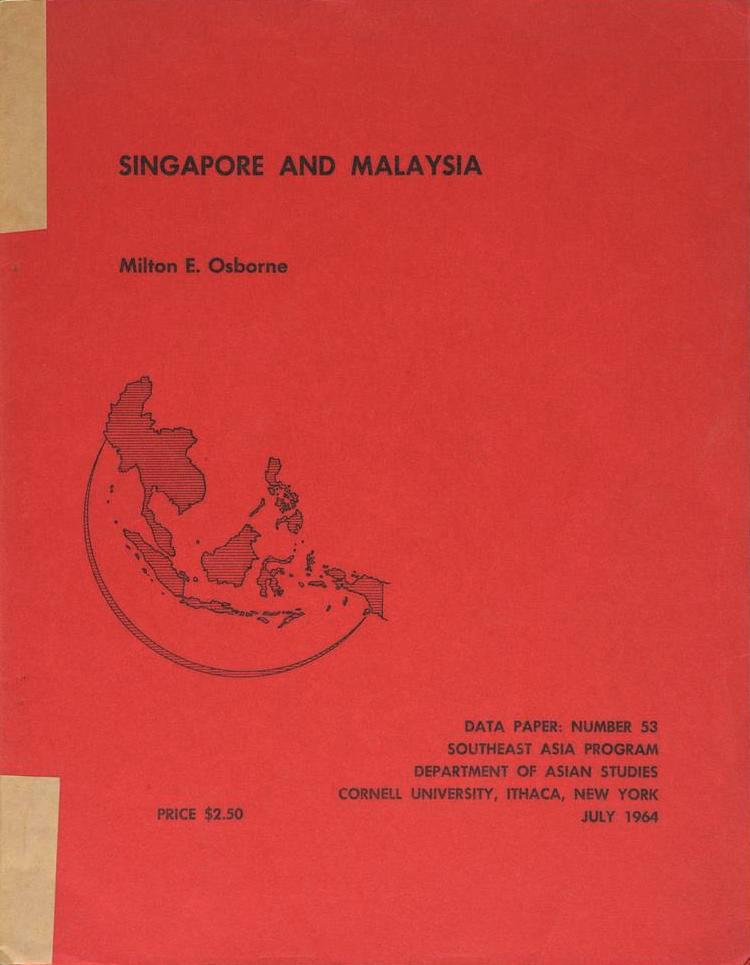
Singapore and Malaysia
1964
Catalogue of Thai language holdings in the Cornell University Libraries through 1964
1964
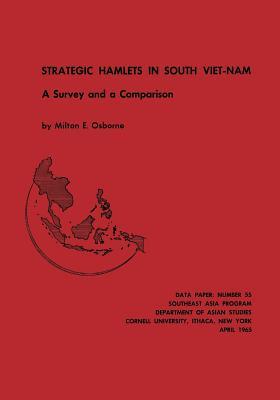
Strategic Hamlets in South Vietnam
A Survey and Comparison
1965
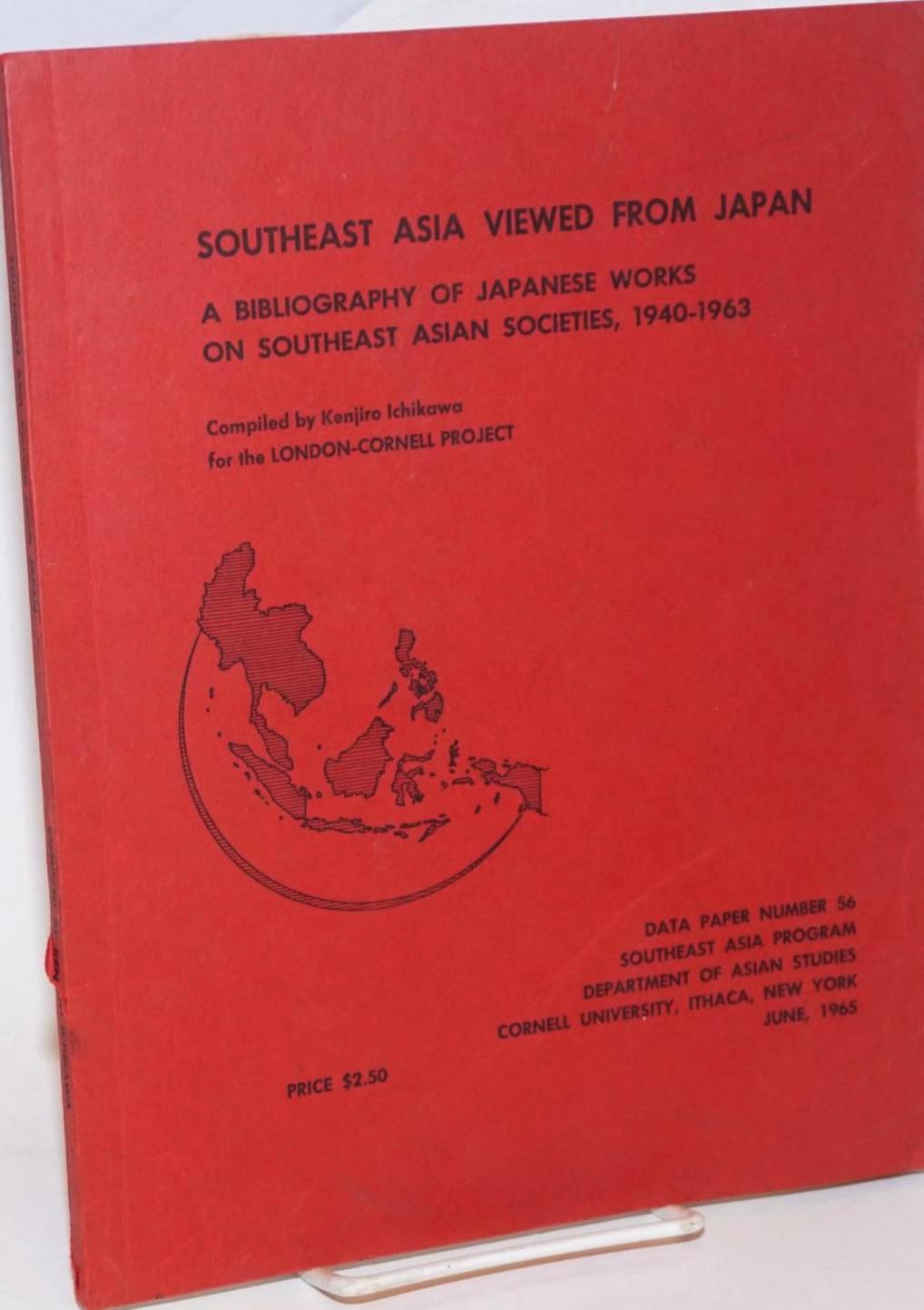
Southeast Asia Viewed From Japan
A Bibliography Of Japanese Works On Southeast Asian Societies, 1940-1963
1965
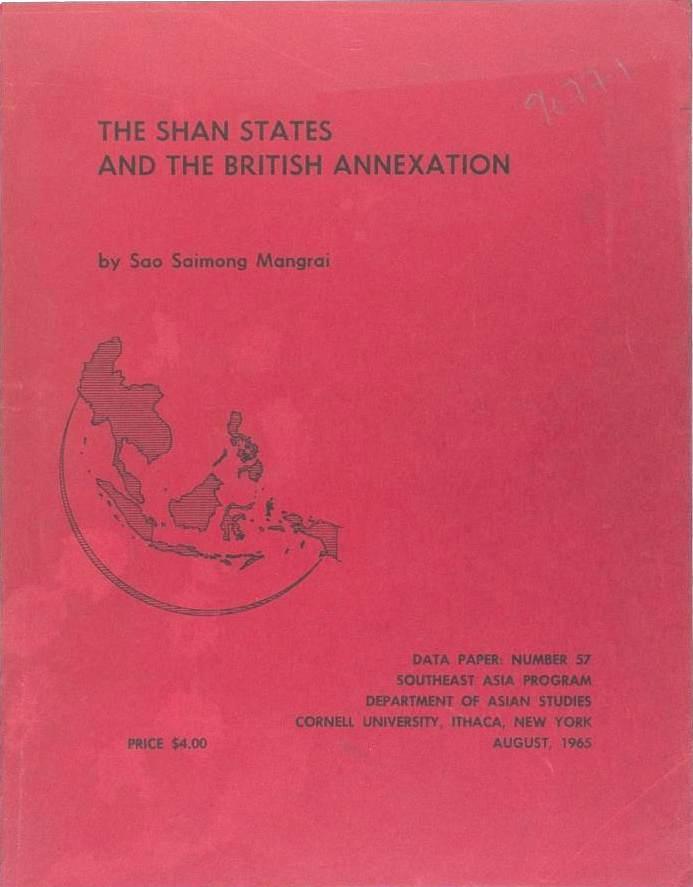
The Shan States And The British Annexation
1965
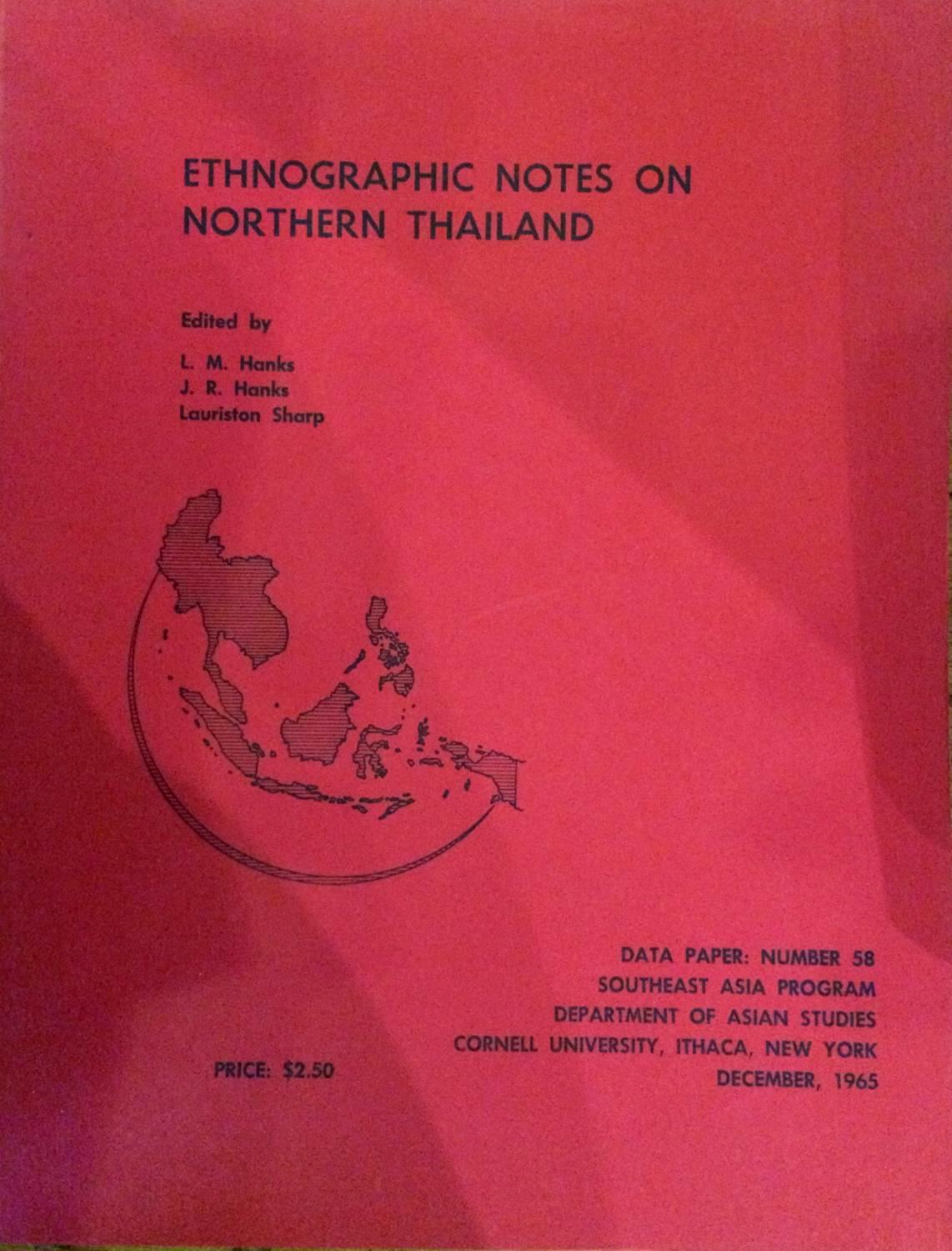
Ethnographic Notes On Northern Thailand
1965
The Nan Chronicle
1966
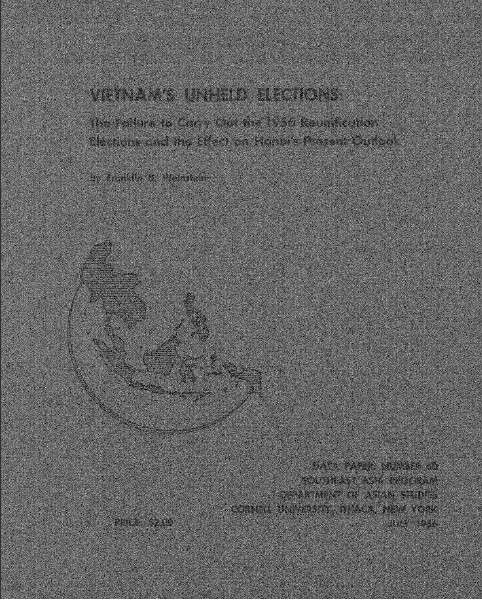
Vietnam's Unheld Elections
the Failure to Carry Out the 1956 Reunification Elections and the Effect on Hanoi's Present Outlook
1966
Rajah's Servant
1966
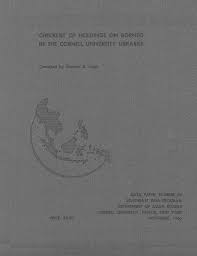
Checklist of Holdings on Borneo in the Cornell University Libraries
1966
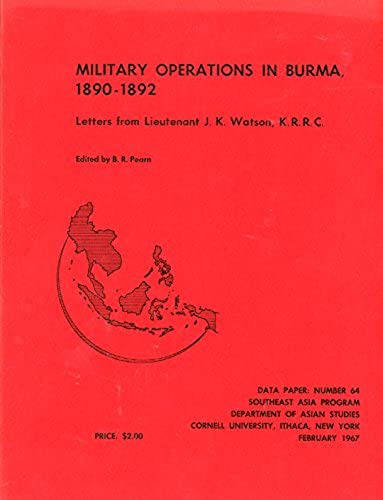
Military Operations In Burma, 1890-1892
Letters from Lieutenant J.K. Watson, K. R. R. C.
1967
Isan
Regionalism in Northeastern Thailand
1988
Thai Students In The United States
A Study in Attitude Change
1967
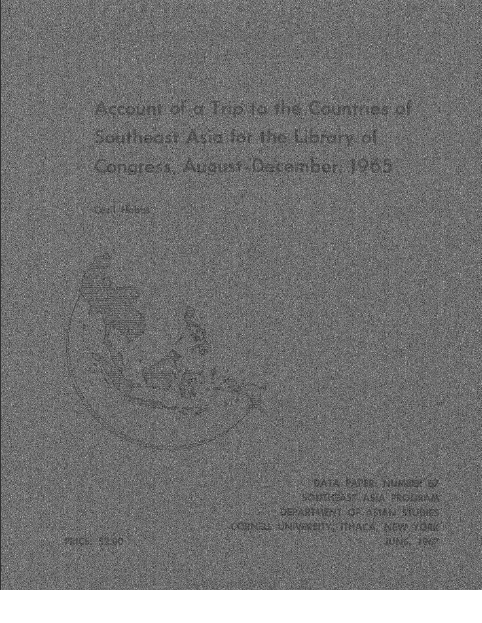
Account of a Trip to the Countries of Southeast Asia for the Library of Congress, August-December, 1965
1967
Akha-English Dictionary
1968
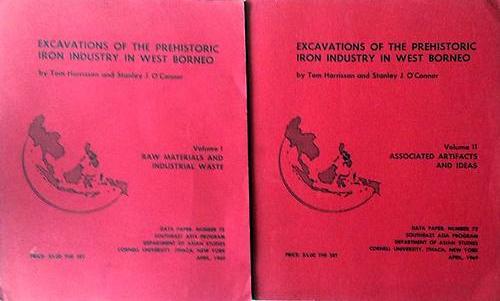
Excavations of the Prehistoric Iron Industry in West Borneo
1969
The separation of Singapore from Malaysia
1969
WHITE HMONG-ENGLISH DICTIONARY
1969
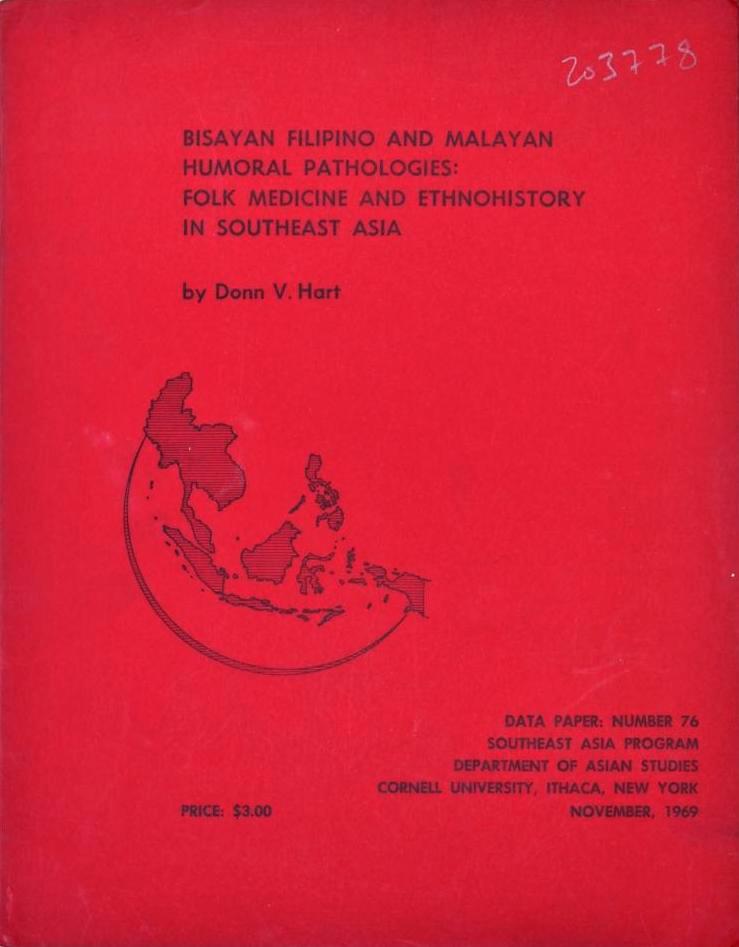
Bisayan Filipino And Malayan Humoral Pathologies
Folk Medicine And Ethnohistory In Southeast Asia
1969
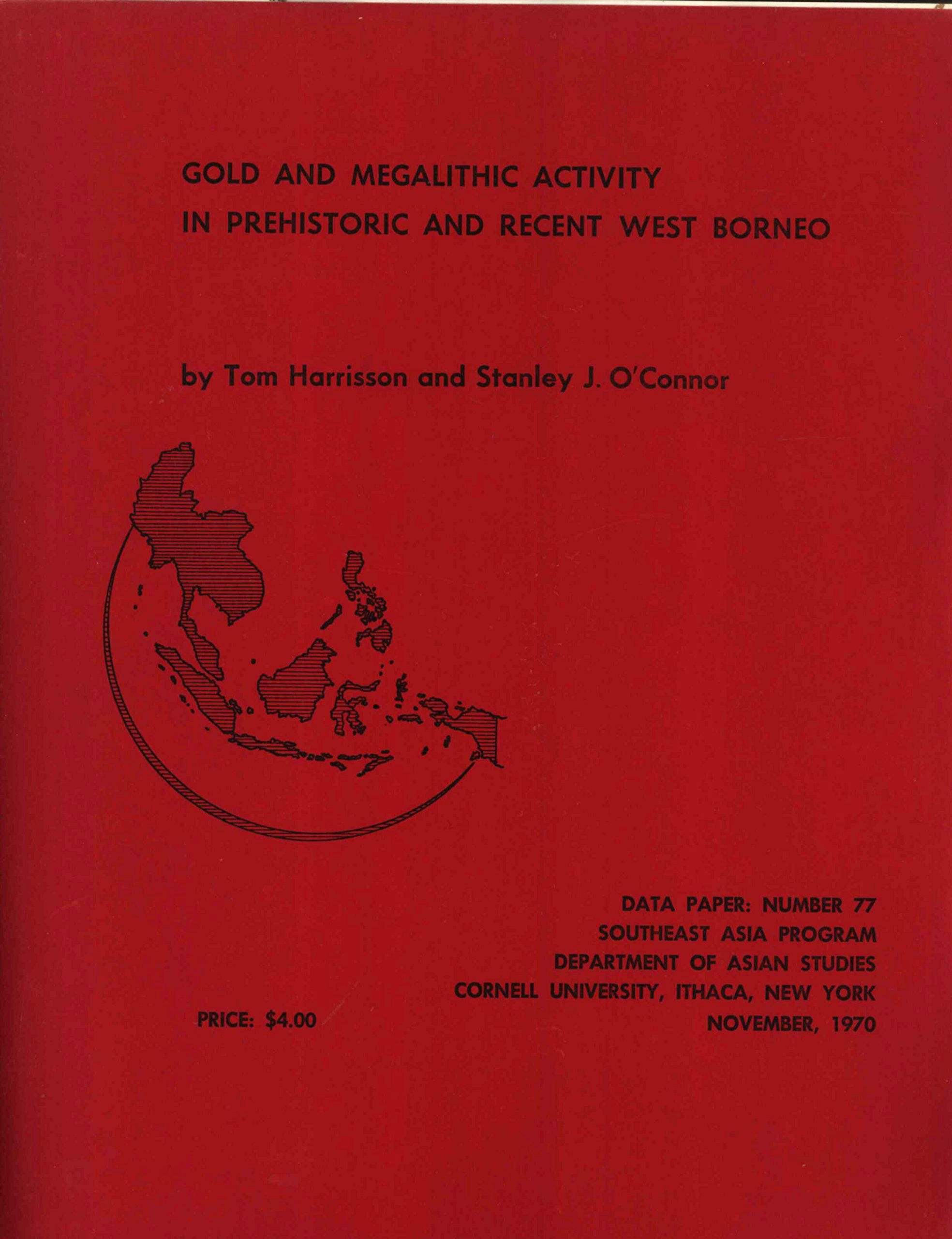
Gold And Megalithic Activity In Prehistoric And Recent West Borneo
1970
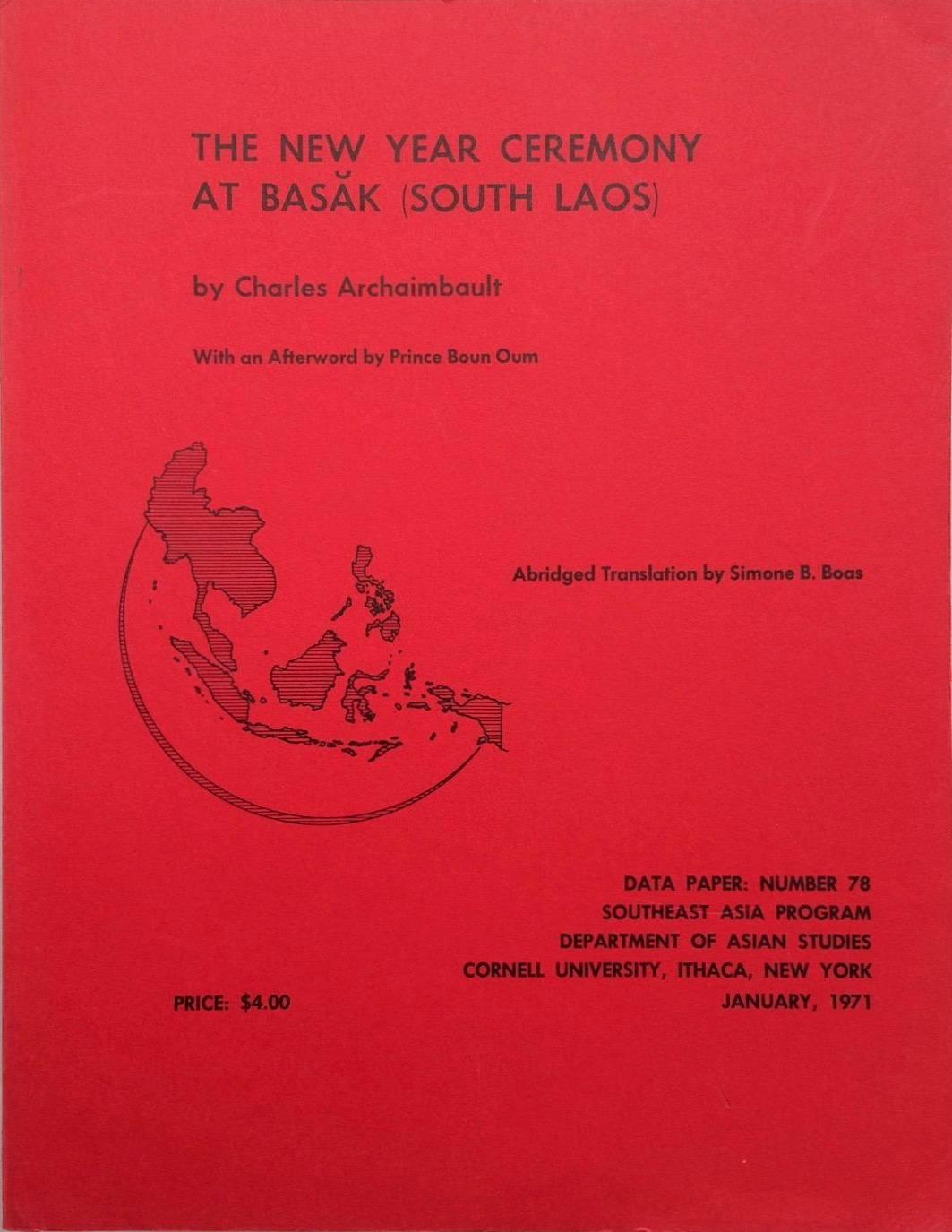
The New Year Ceremony At Basăk
1971
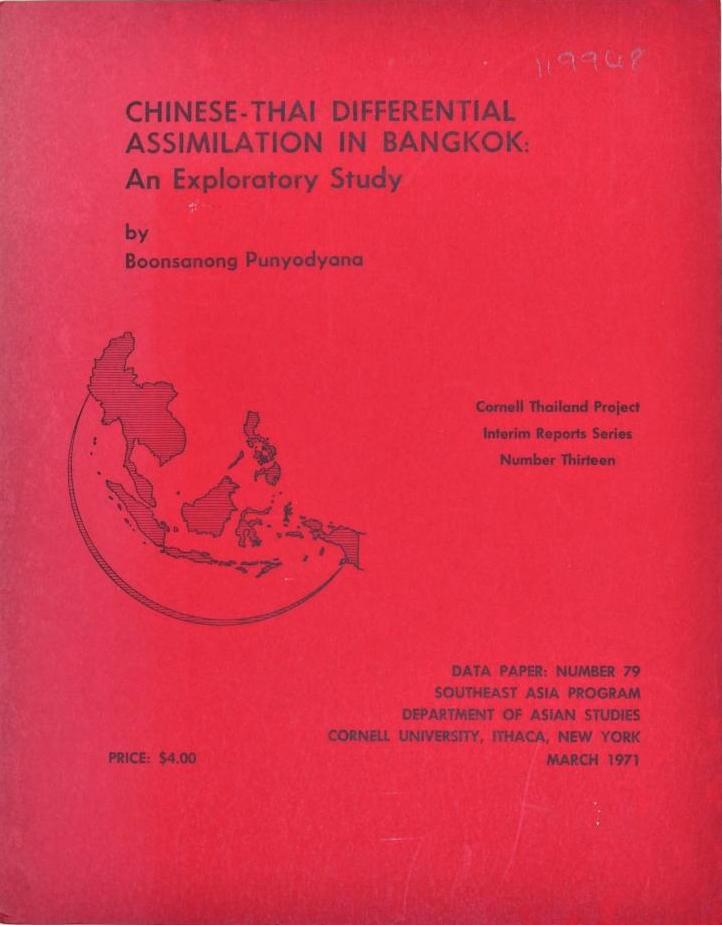
Chinese-Thai Differential Assimilation In Bangkok
An Exploratory Study
1971
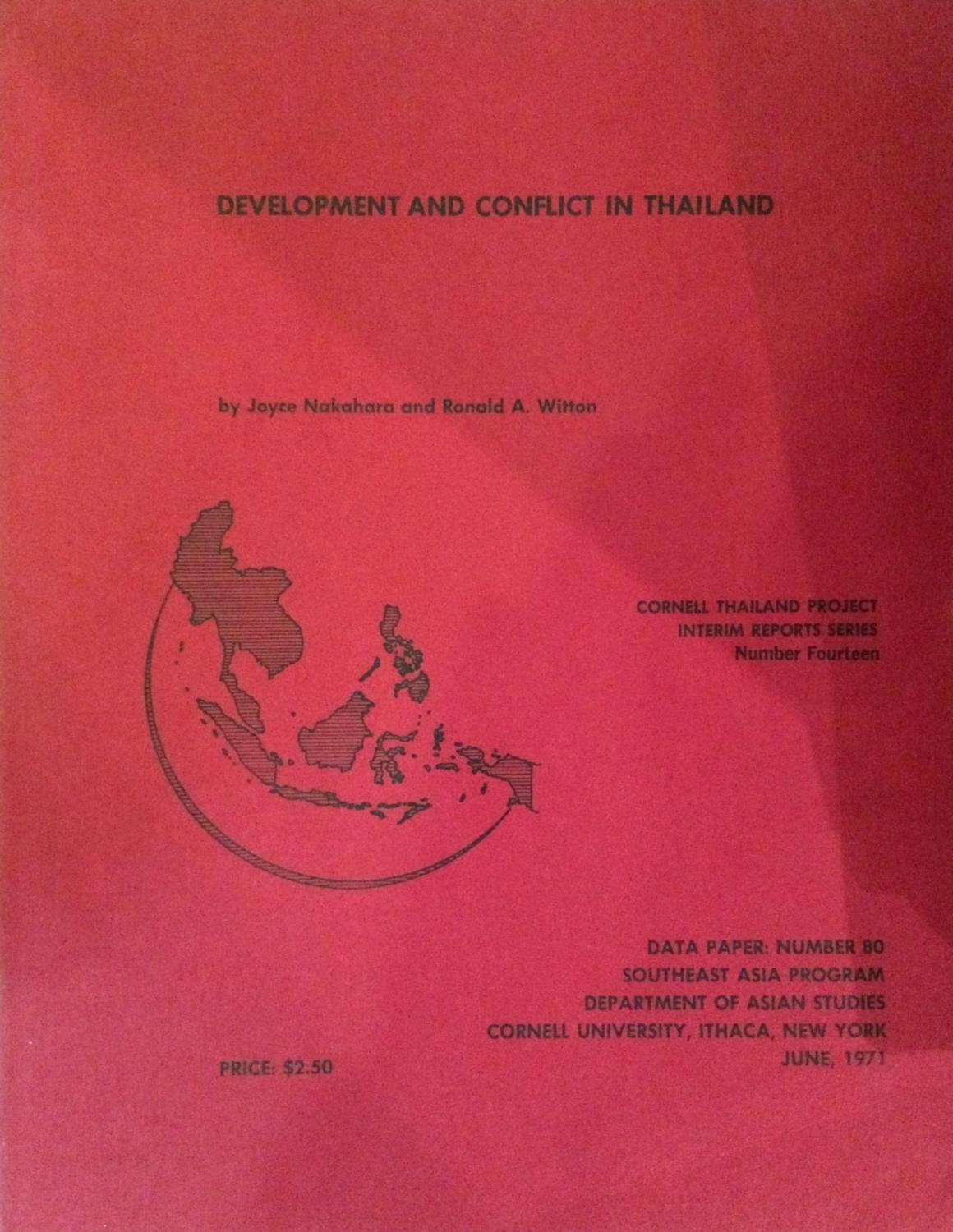
Development And Conflict In Thailand
1971
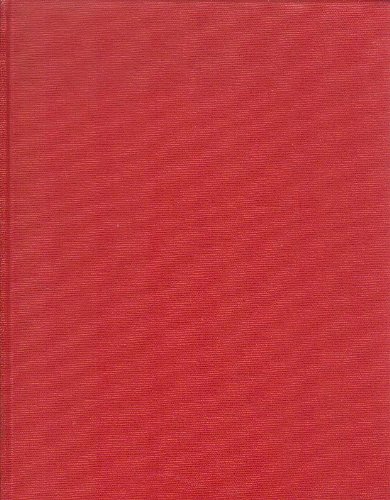
Thai Titles and Ranks
Including a translation of Traditions of Royal Lineage in Siam by King Chulalongkorn
1971
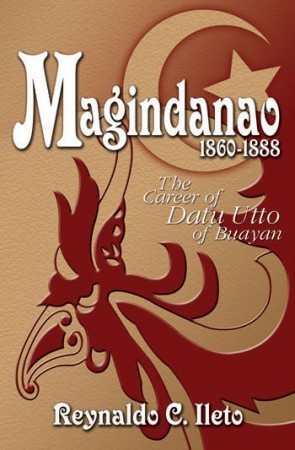
Magindanao, 1860-1888
The Career of Datu Utto of Buayan
1971
Southeast Asia Field Trip For The Library Of Congress, 1970-1971
1972
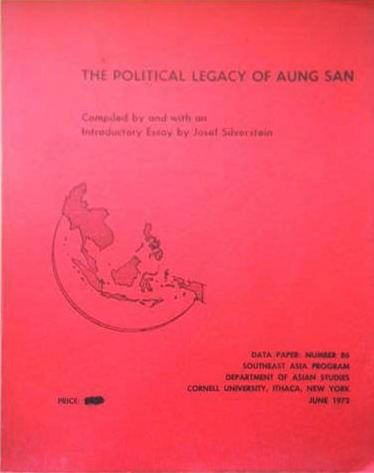
The Political Legacy Of Aung San
1972
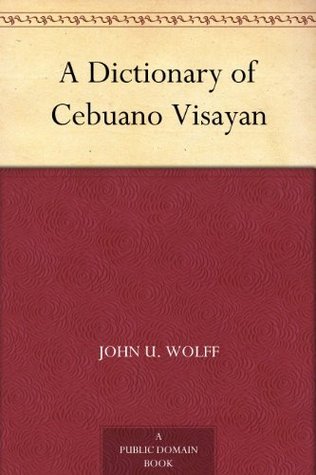
A Dictionary of Cebuano Visayan
1972

Miao And Yao Linguistic Studies
Selected Articles in Chinese, Translated by Chang Yü-Hung and Chu Kwo-Ray
1972
A Checklist of Indonesian Serials in the Cornell University Library
1973
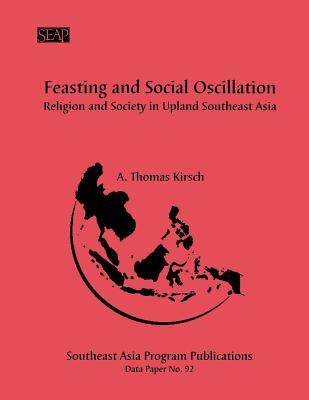
Feasting and Social Oscillation
A Working Paper on Religion and Society in Upland Southeast Asia
1973
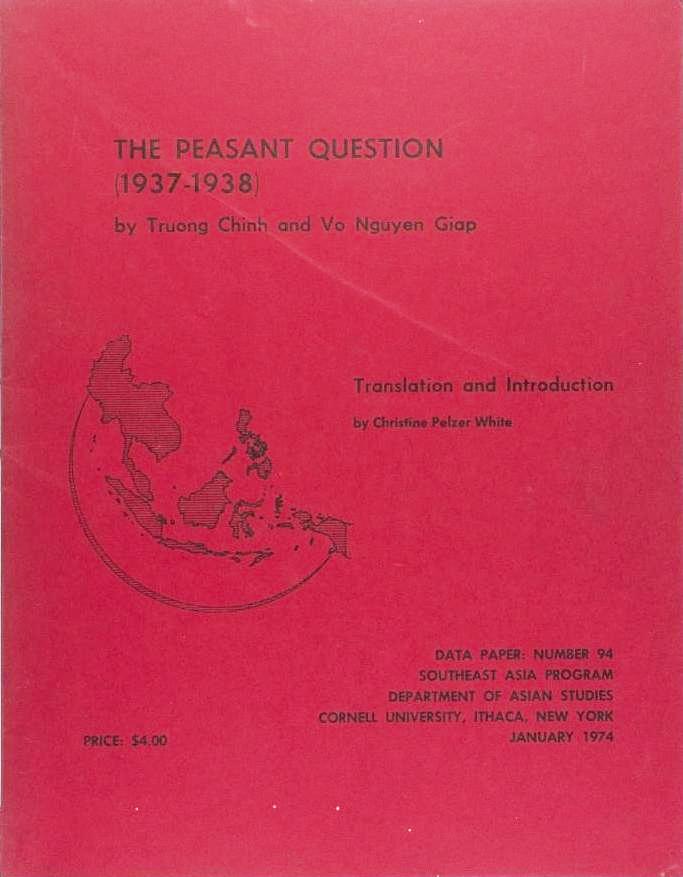
The Peasant Question, 1937-1938
1938
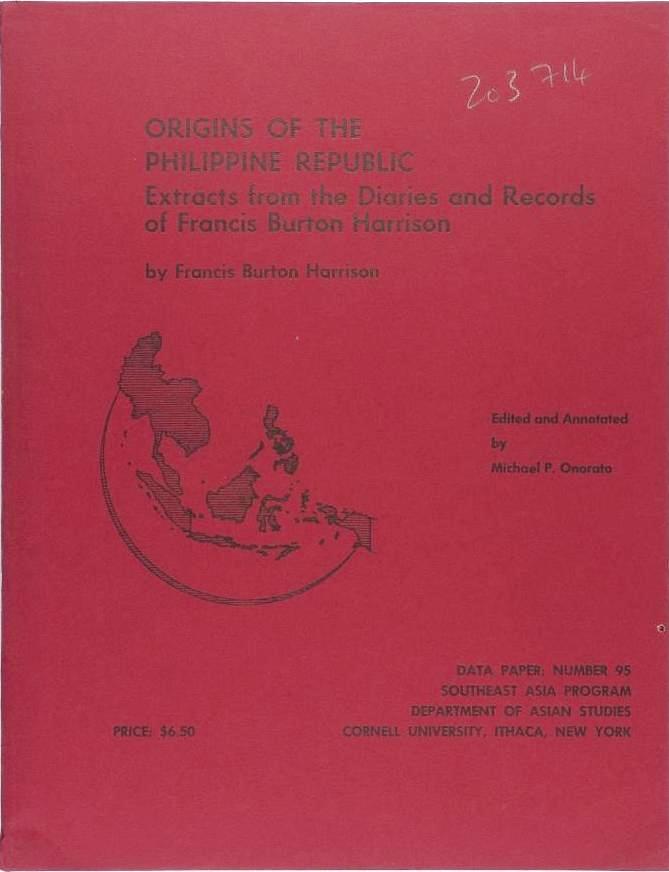
Origins Of The Philippine Republic
Extracts from the Diaries and Records of Francis Burton Harrison
1974
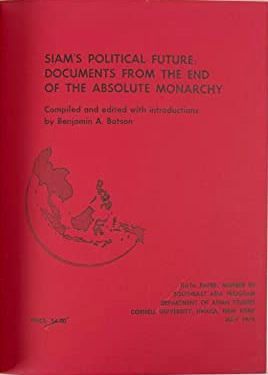
Siam's political future
Documents from the end of the absolute monarchy
1974

Reminiscences On The Army For National Salvation
Memoir Of General Chu Van Tan
1974

Những năm tháng không thể nào quên
hồi ức
1975
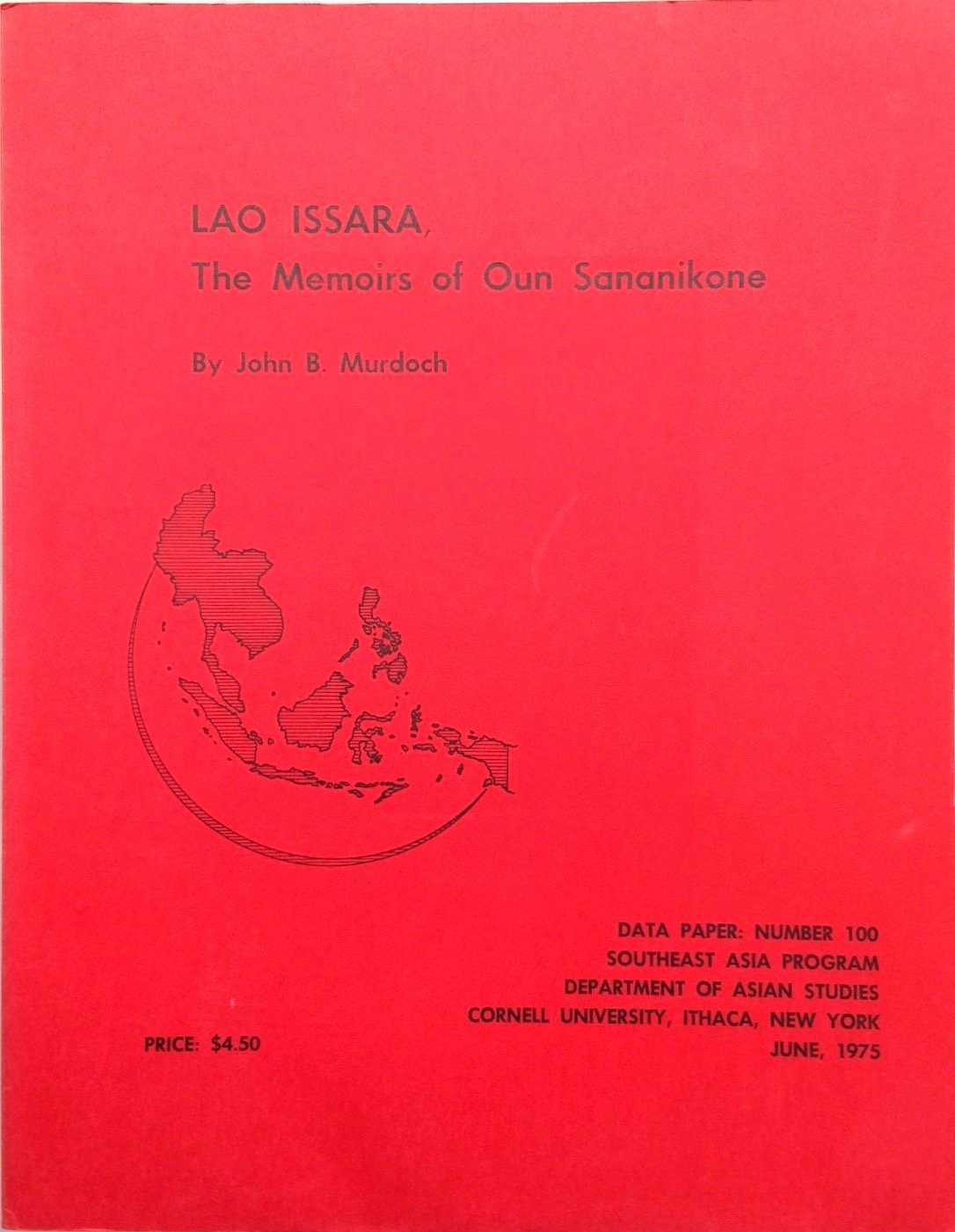
Lao Issara
The Memoirs of Oun Sananikone
1975
Annotated Guide to Philippine Serials
1976
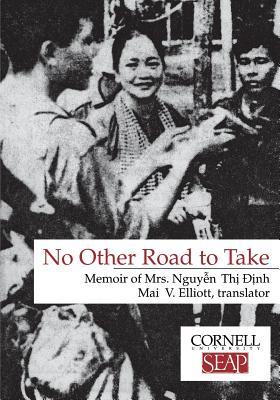
No Other Road to Take
Memoir of Mrs. Nguyen Thi Dinh
1976
Directory of the Cornell Southeast Asia program, 1951-1976
1976
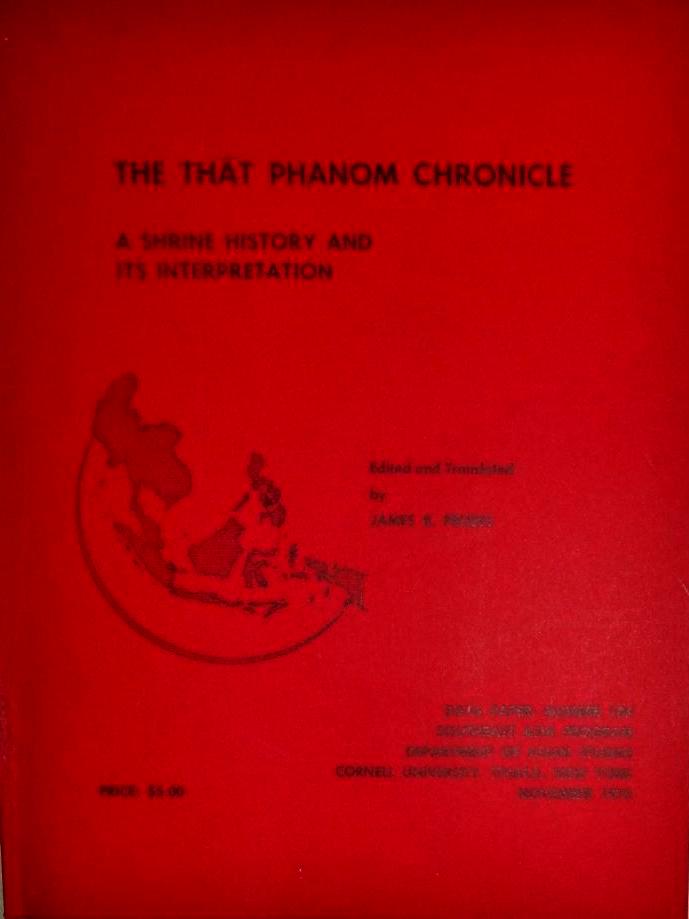
The Thāt Phanom chronicle
A shrine history and its interpretation
1976
The Philippines in World War II and to Independence (December 8, 1941 - July 4, 1946)
An Annotated Bibliography, Second revised and greatly enlarged Edition.
1977
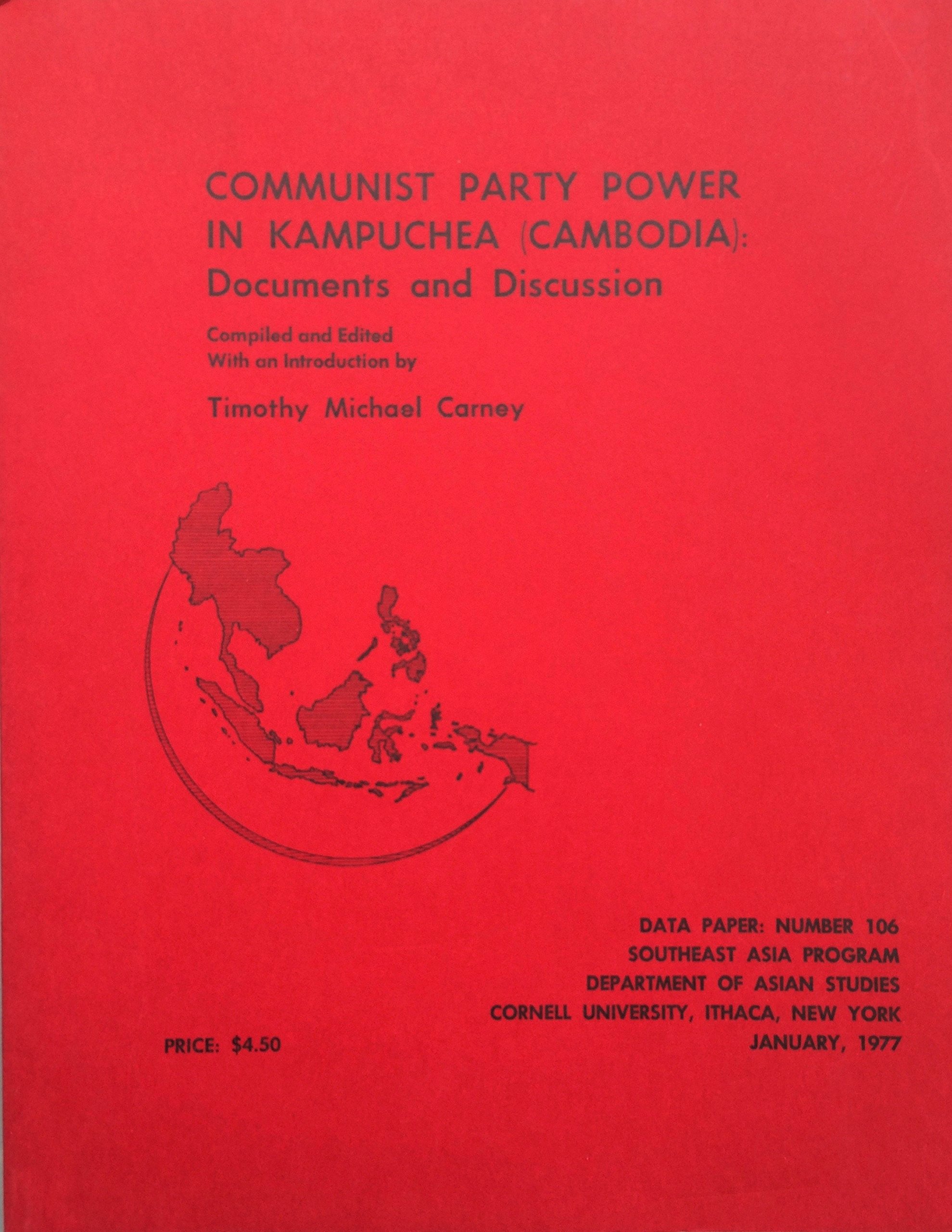
Communist Party Power In Kampuchea (Cambodia)
Documents and Discussion
1977
Research on Thailand in the Philippines
An annotated bibliography of theses, dissertations, and investigation papers
1977
The Devaraja Cult
1974
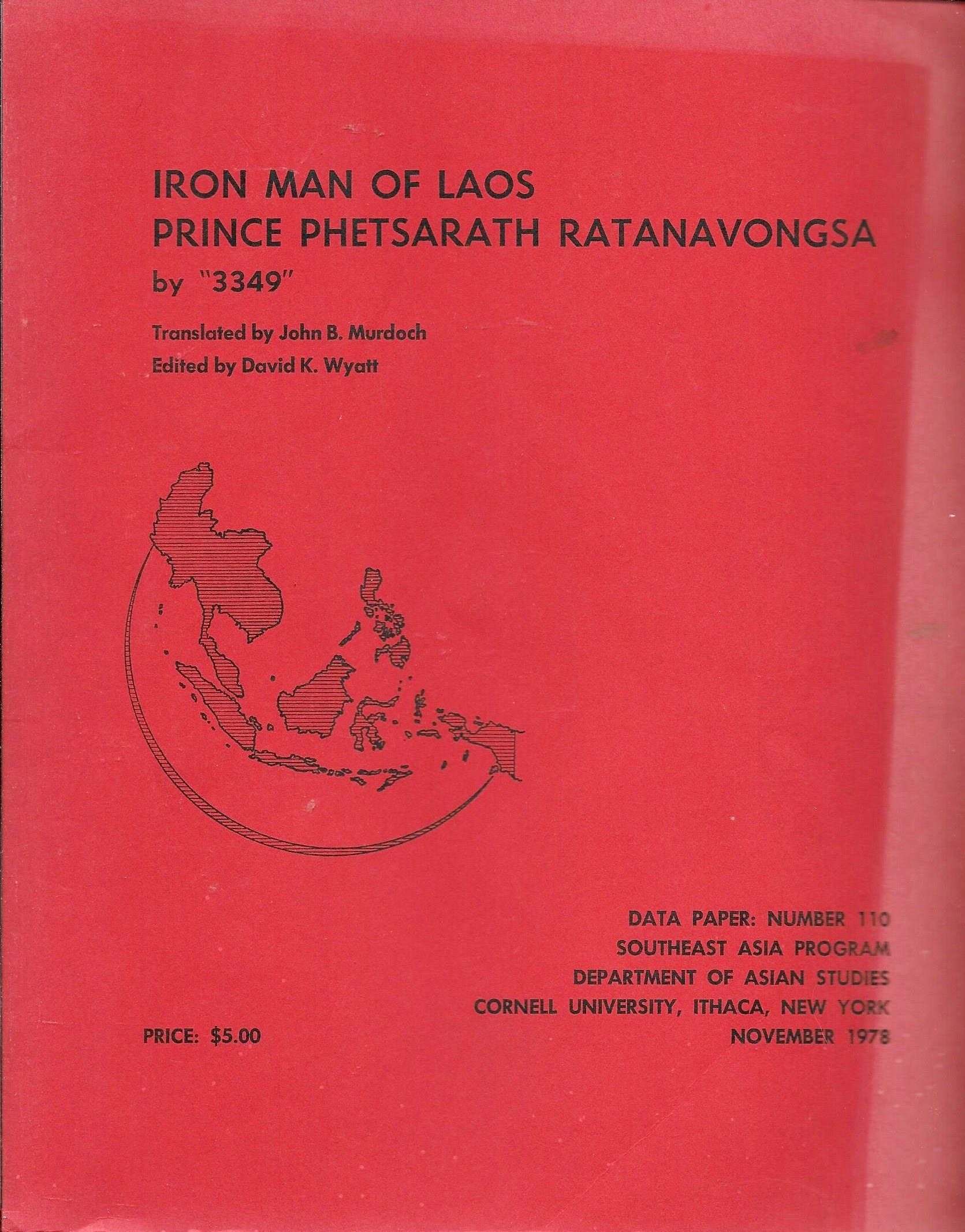
Iron Man Of Laos
Prince Phetsarath Ratanavongsa
1978
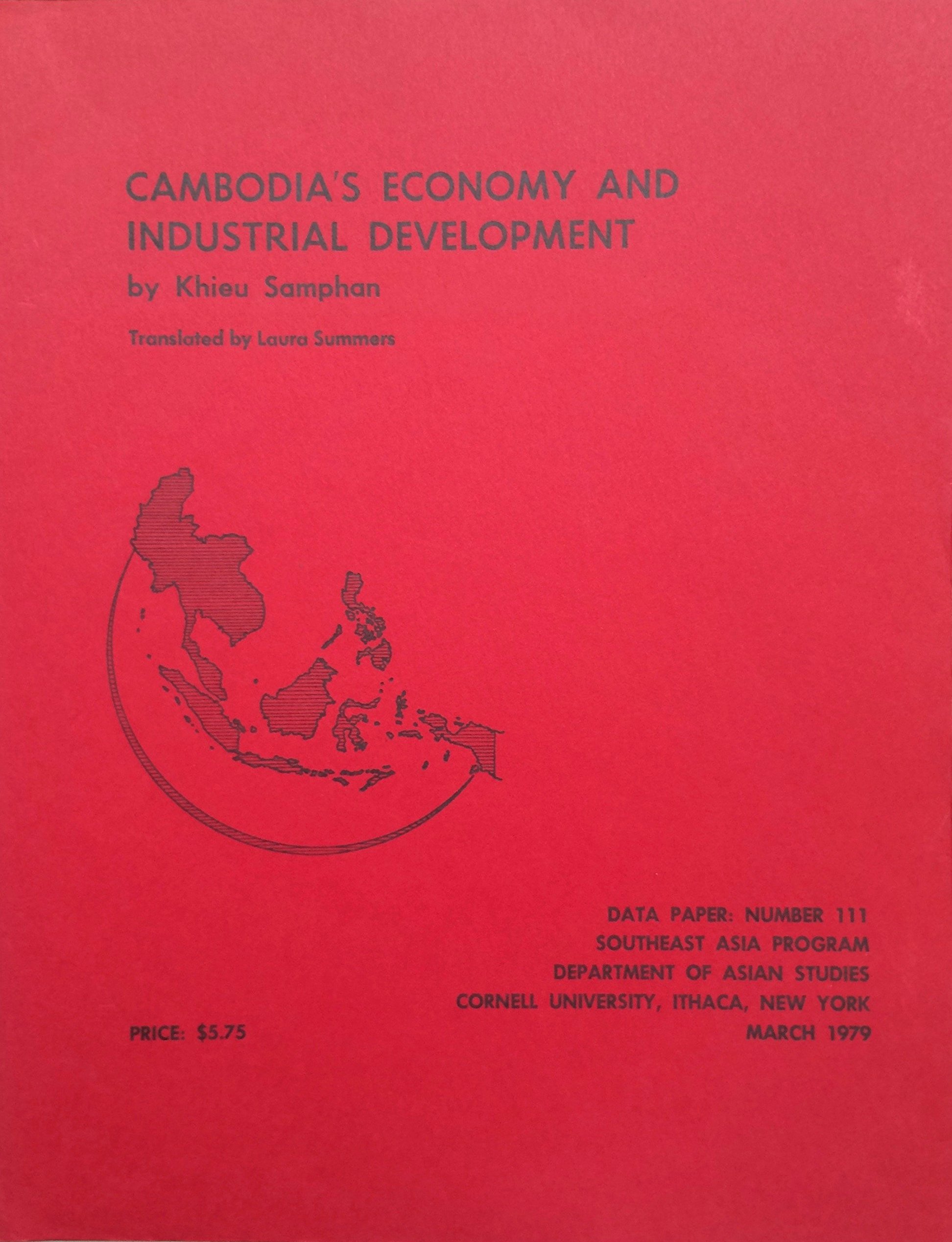
Cambodia's Economy And Industrial Development
1959
The Development Of Labor Institutions In Thailand
1979

Memoirs of the Four-Foot Colonel
1980
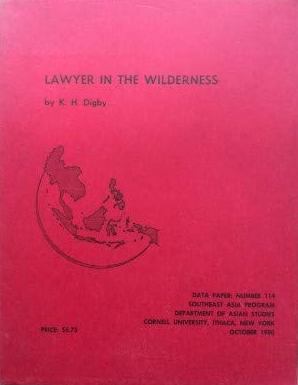
Lawyer In The Wilderness
1980
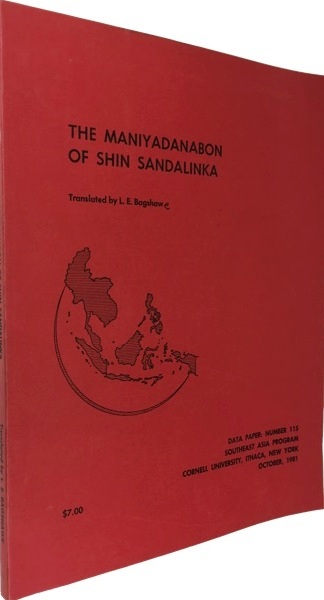
The Maniyadanabon of Shin Sandalinka
1981
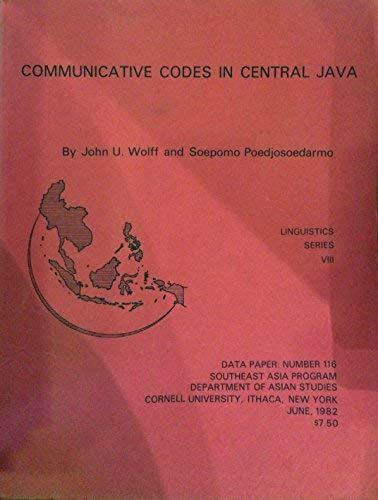
Communicative Codes In Central Java
1982
Authors
Tom Harrisson, educated in England at Harrow School and Pembroke College, Cambridge is described as having been a was an ornithologist, explorer, journalist, broadcaster, soldier, guerrilla, ethnologist, museum curator, archaeologist, documentarian, film-maker, conservationist, and writer. He conducted ornithological and anthropological research in upland Borneoand the New Hebrides from 1932-1935. Later, in 1937 with Humphrey Jennings and Charles Madge, Harrisson founded Mass-Observation, a project to study the everyday lives of ordinary people in Britain. A graduate of wartime officer candidate training at Sandhurst, Harrisson was inducted into the British Special Operations Executive during the Second World War and sent to Australia to help insert a cladestine unit into Borneo. His efforts to rescue stranded American airmen shot down over Borneo are a central part of The Airmen and the Headhunters. Harrisson's series The Borneo Story was broadcast by BBC television in 1957. he 1950s and 1960s Tom and Barbara Harrisson undertook pioneering excavations in the West Mouth of the Great Cave at Niah, Sarawak. Their most important discovery was a human skull in deposits dated by radiocarbon to about 40,000 years ago, the earliest date for modern humans in Borneo. The results of their excavations were never published in an appropriate manner leading to uncertainty and doubts as to their results; however, they are largely vindicated by results of excavations carried out by the Niah Cave Project from 2000-2003. Three films (amongst more made for British TV) record the Niah work[7] At the start of the Brunei Revolt in 1962 Tom Harrisson gathered and led a force of Dyaks 2,000 strong to contain the rebels and cut off their escape route to Indonesia. Harrisson traveled, lived and worked in the USA, the UK and France before dying in a road accident in Thailand. A biography, The Most Offending Soul Alive by Judith Heimann, gives a flavour of the strong feelings he engendered. A documentary Tom Harrisson – The Barefoot Anthropologist, hosted by David Attenborough, was broadcast on BBC4 in the autumn of 2006.
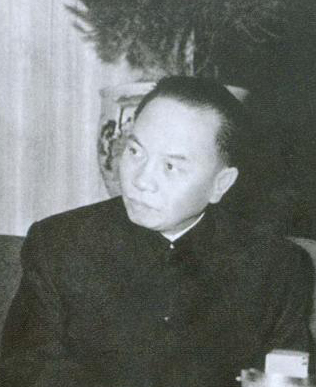
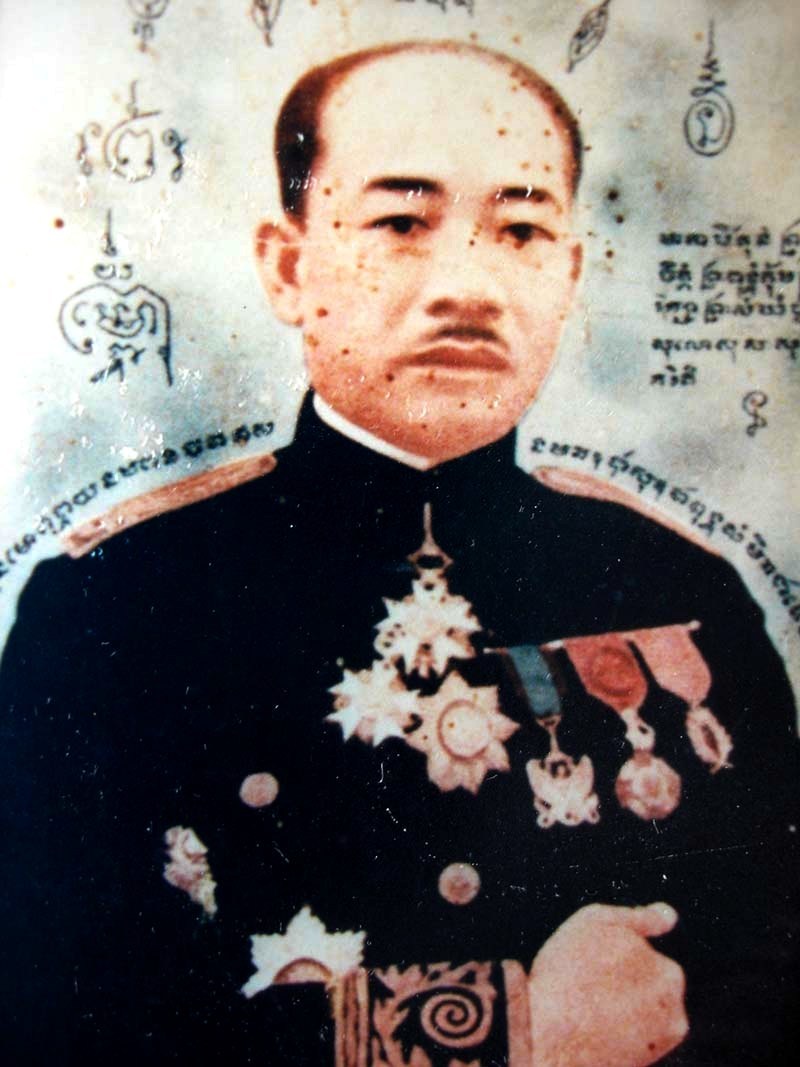
Prince Phetsarath Ratanavongsa was the first and last Viceroy of the Kingdom of Laos. He was a Lao nationalist and political figure, and is considered by many to have been the founder of Lao independence. Prince Phetsarath was the eldest surviving son of Prince Boun Khong, Viceroy of the Kingdom of Luang Prabang (the first-born son, Chittarath, died before reaching adulthood). He was elder brother to Prince Souvanna Phouma and elder half-brother to Prince Souphanouvong. Prince Phetsarath studied at the Lycée Chasseloup-Laubat in Saigon, then in 1905 he traveled to France and continued his education, first at the Lycée Montaigne and ultimately at the École Coloniale, in Paris. He returned to Laos in 1912, married Princess Nhin Kham Venne in 1913, and joined the civil service of the Kingdom of Luang Prabang, which was at that time a French protectorate. By 1919 he had become head of the indigenous branch of the civil service, and for the next two decades he worked to unify Laos by creating a bureaucracy that would transcend the principalities and provinces into which the country had become divided. In 1941 the French ceded additional provinces (including Vientiane) to the Kingdom of Luang Prabang and granted executive powers to a Lao cabinet in which Viceroy Phetsarath served as premier. Soon after this, the Japanese occupied the country. When the Japanese surrendered at the end of World War II, Phetsarath sought to prevent the return of the French and proclaimed the unification of Laos as a single, independent kingdom. When he formed the Lao Issara (Free Lao) government in Vientiane, King Sisavang Vong dismissed him from office. As the French retook control of Laos, Phetsarath fled in April 1946 to Thailand, where he led the Lao Issara government-in-exile. Laos was proclaimed a self-governing state within the French Union in 1949, and was granted full independence at the Geneva Conference in September 1954. Prince Phetsarath returned to Laos in 1957. He wrote two books (both published in Thailand) and served as a respected elder statesman, actively advising the political leadership of the kingdom until his death in 1959. The autobiography of Prince Phetsarath Ratanavongsa was published posthumously, in 1978 (Iron Man of Laos: Prince Phetsarath Ratanavongsa).
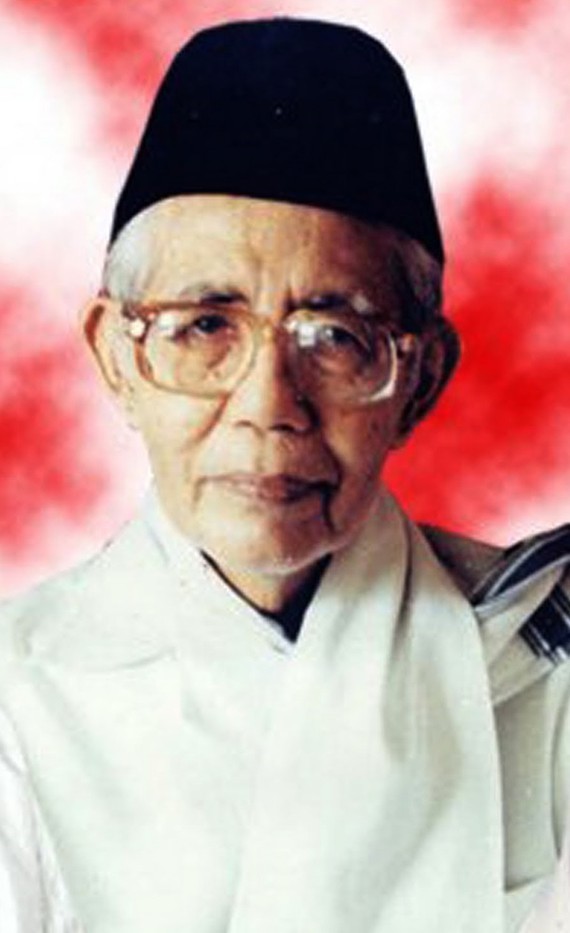
Merupakan seorang ulama, negarawan, dan pejuang kemerdekaan Indonesia. Ia merupakan pendiri sekaligus pemimpin partai politik Masyumi, dan tokoh Islam terkemuka Indonesia. Di dalam negeri, ia pernah menjabat menteri dan perdana menteri Indonesia, sedangkan di kancah internasional, ia pernah menjabat sebagai presiden Liga Muslim se-Dunia (World Muslim Congress) dan ketua Dewan Masjid se-Dunia. Natsir besar di Solok sebelum akhirnya merantau ke Bandung untuk melanjutkan pendidikan ke jenjang SMA dan kemudian mempelajari ilmu Islam secara luas di perguruan tinggi. Ia terjun ke dunia politik pada pertengahan 1930-an dengan bergabung di partai politik berideologi Islam. Pada 5 September 1950, ia diangkat sebagai perdana menteri Indonesia kelima. Setelah mengundurkan diri dari jabatannya pada tanggal 26 April 1951 karena berselisih paham dengan Presiden Soekarno, ia semakin vokal menyuarakan pentingnya peranan Islam di Indonesia hingga membuatnya dipenjarakan oleh Soekarno. Setelah dibebaskan pada tahun 1966, Natsir terus mengkritisi pemerintah yang saat itu telah dipimpin Soeharto hingga membuatnya dicekal. Natsir banyak menulis tentang pemikiran Islam. Ia aktif menulis di majalah-majalah Islam setelah karya tulis pertamanya diterbitkan pada tahun 1929; hingga akhir hayatnya ia telah menulis sekitar 45 buku dan ratusan karya tulis lain. Ia memandang Islam sebagai bagian tak terpisahkan dari budaya Indonesia. Ia mengaku kecewa dengan perlakuan pemerintahan Soekarno dan Soeharto terhadap Islam. Selama hidupnya, ia dianugerahi tiga gelar doktor honoris causa, satu dari Lebanon dan dua dari Malaysia. Pada tanggal 10 November 2008, Natsir dinyatakan sebagai pahlawan nasional Indonesia. Natsir dikenal sebagai menteri yang "tak punya baju bagus, jasnya bertambal. Dia dikenang sebagai menteri yang tak punya rumah dan menolak diberi hadiah mobil mewah."

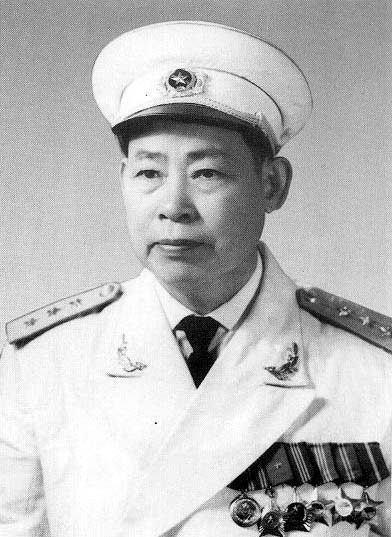
Pe Khin was a Burmese diplomat. He was one of the main negotiators at the second Panglong Conference, held in February 1947 by General Aung San (head of the interim Burmese government) and Shan, Kachin and Chin ethnic minority leaders. Pe Khin was the primary architect of the resulting Panglong Agreement, which laid out plans for a united struggle against the British and the future of Burma after independence. This historic document would eventually lead to the establishment of the Union of Burma, which became an independent nation on January 4, 1948. Pe Khin was appointed as Burma's first Ambassador to Pakistan in 1947. He was then Ambassador to Thailand from 1953 to 1956. He was transferred to the Soviet Union in 1964, and to Singapore in 1966. He retired from diplomatic service in 1972.

George McTurnan Kahin was an American historian and political scientist. He was one of the leading experts on Southeast Asia and a critic of United States involvement in the Vietnam War. After completing his dissertation, which is still considered a classic on Indonesian history, Kahin became a faculty member at Cornell University. At Cornell, he became the director of its Southeast Asia Program and founded the Cornell Modern Indonesia Project.
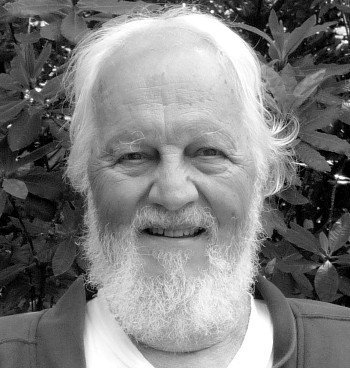
Ruth T. McVey received her PhD in 1961 from Cornell University in the Government Department and Southeast Asia Program. Her dissertation was entitled 'The Comintern and the Rise of Indonesian Communism.' In 1954, she received her MA at Harvard University, in the Soviet Area Program. From 1976 to 1984, she was a reader in Politics with reference to Southeast Asia at the University of London, teaching undergraduate and postgraduate courses on Southeast Asian government and politics, and a postgraduate seminar on political ideology. Teaching and tutoring in various general undergraduate politics subjects, especially comparative politics. Supervision of research students in Southeast Asian Politics and Southeast Asian History. From 1969 to 1976, she was a lecturer at the School of Oriental and African Studies, University of London 1969-1976.

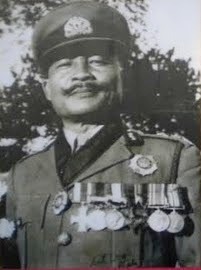
Lieutenant General Smith Dun MC was the first commander-in-chief of the Burmese Armed Forces (Tatmadaw), from 4 January 1948 to 1 February 1949. He earned several decorations and campaign medals during the course of his career from the Union of Burma, the British Indian Empire and the U.K. As pictured in the photo at left (neck suspension, breast star, then others left to right), these were: the Order of the Union of Burma, Class 3- Commander (Maha Thray Sithu); unidentified breast star; Military Cross; Indian General Service Medal 1908-35 with clasp Burma 1930-32; Indian General Service Medal 1936-39 with clasp North West Frontier 1936-37; 1939-45 Star; Burma Star; Defence Medal 1939-45; British War Medal 1939-45 with oak leaf for Mention in Despatches.
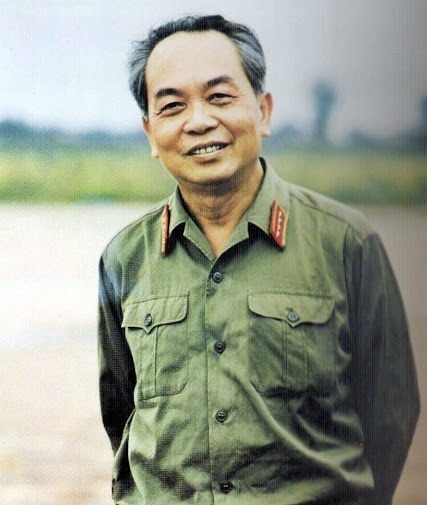
General in the Vietnam People's Army and a politician. Giap is considered one of the greatest military strategists of all time. He first grew to prominence during World War II, where he served as the military leader of the Viet Minh resistance against the Japanese occupation of Vietnam. Giap was a principal commander in two wars: the First Indochina War (1946–54) and the Vietnam War (1960–75). He participated in the following historically significant battles: Lạng Sơn (1950), Hòa Bình (1951–52), Điện Biên Phủ (1954), the Tết Offensive (1968), the Easter Offensive (1972), and the final Ho Chi Minh Campaign (1975). Giap was also a journalist, an interior minister in President Hồ Chí Minh's Việt Minh government, the military commander of the Viet Minh, the commander of the People's Army of Vietnam (PAVN), and defense minister. He also served as a member of the Politburo of the Vietnam Workers' Party, which in 1976 became the Communist Party of Vietnam. He was the most prominent military commander, beside Ho Chi Minh, during the Vietnam War, and was responsible for major operations and leadership until the war ended.